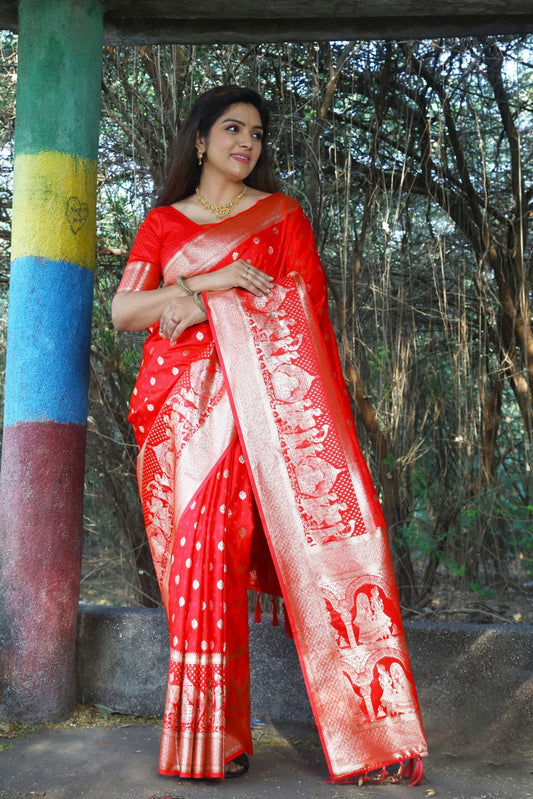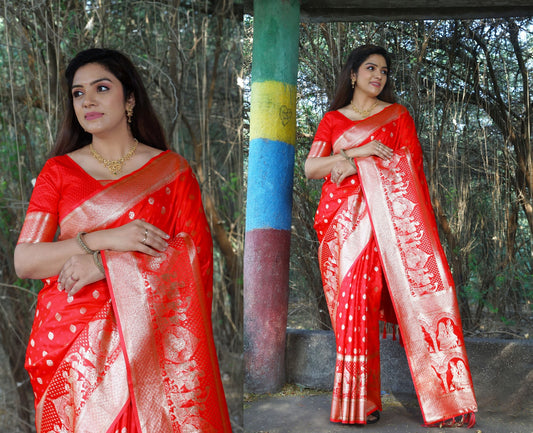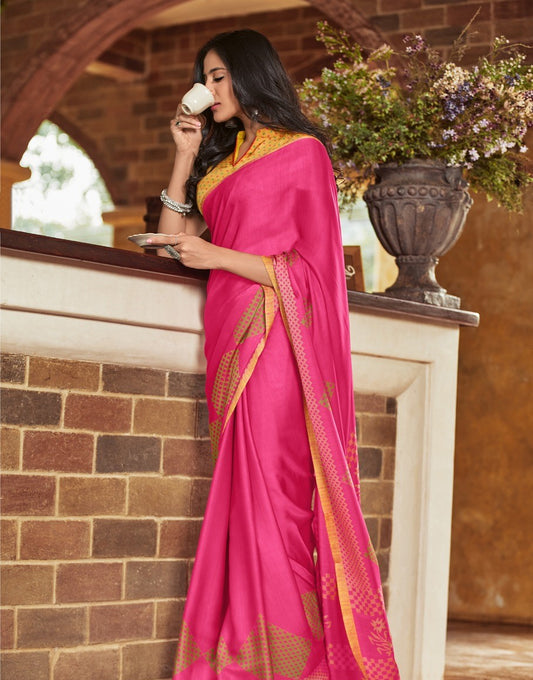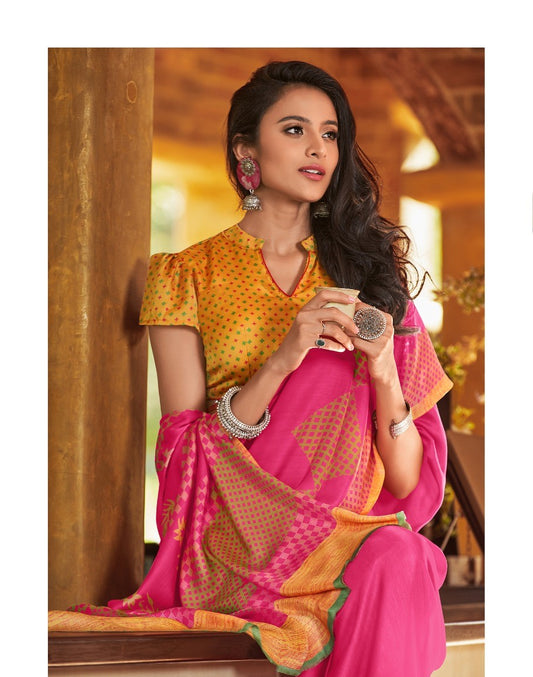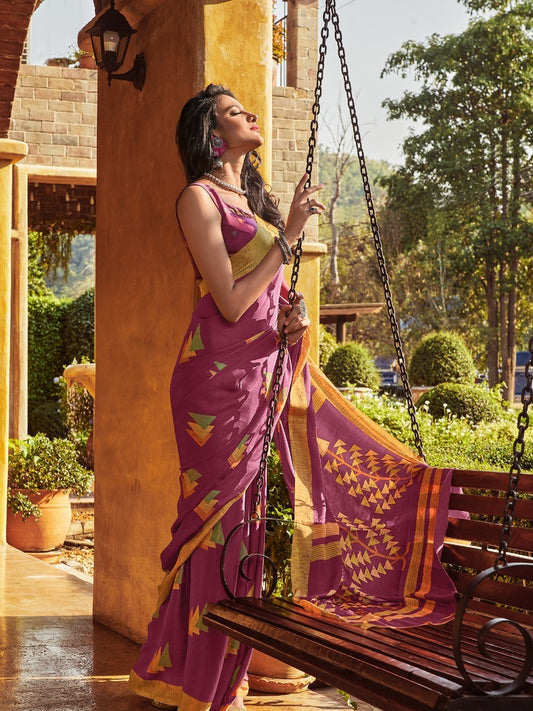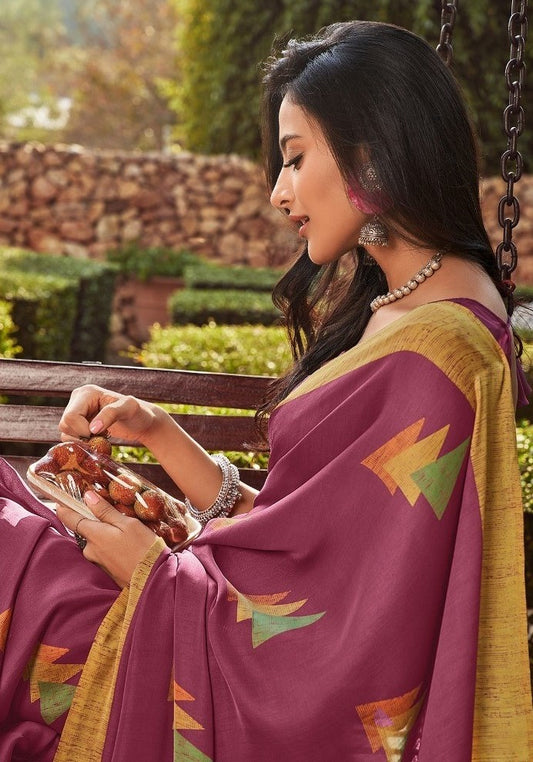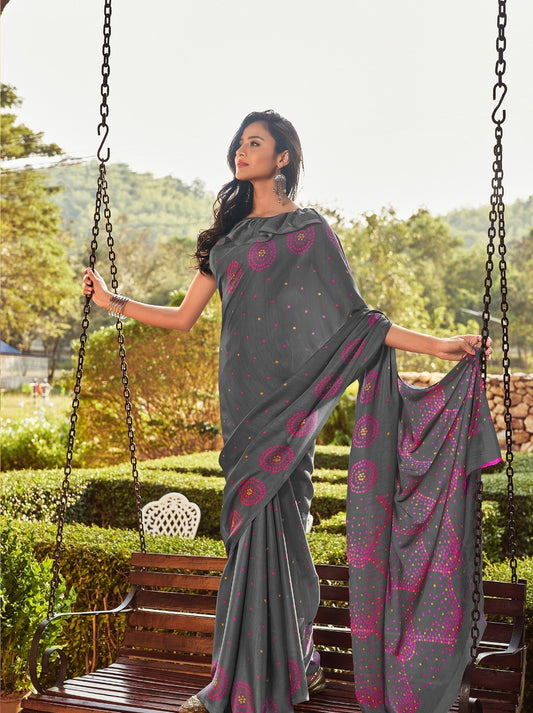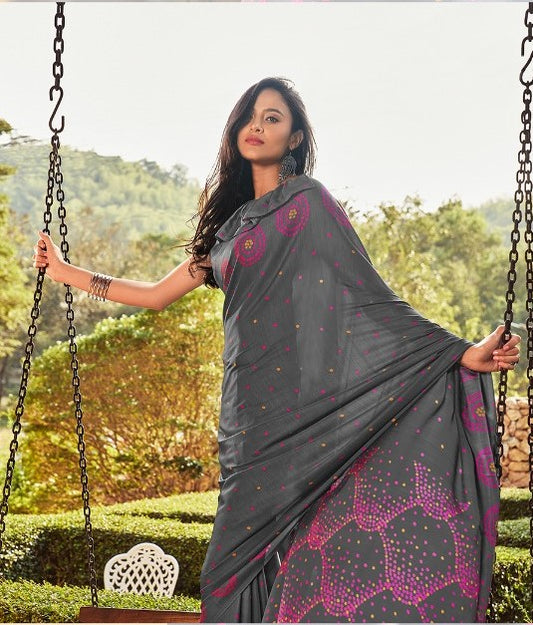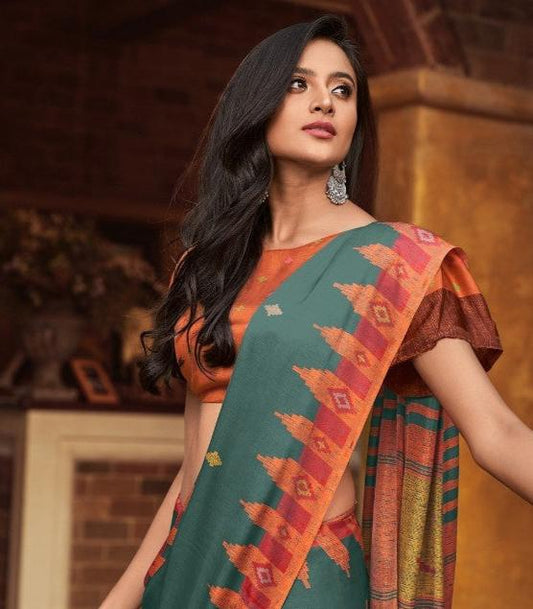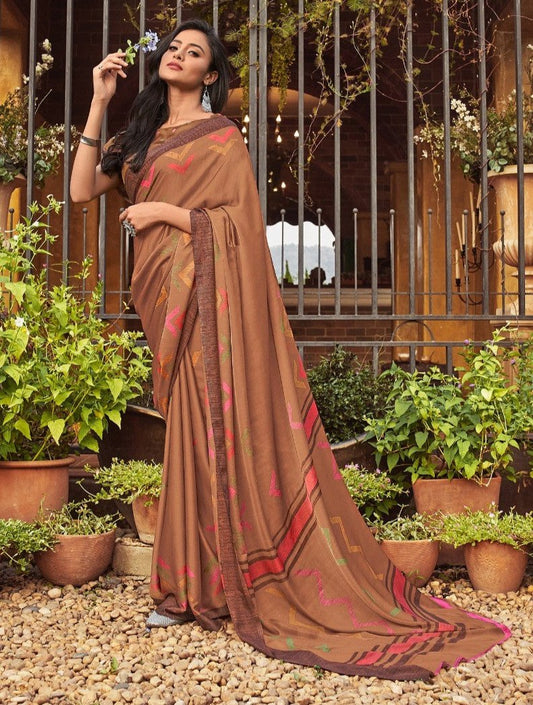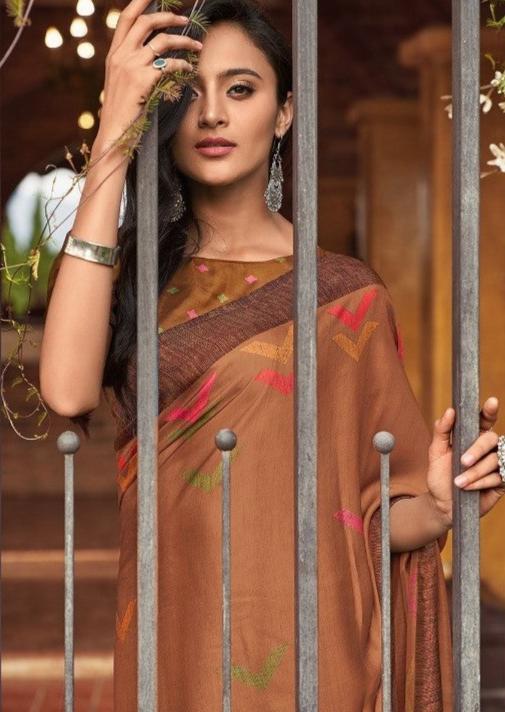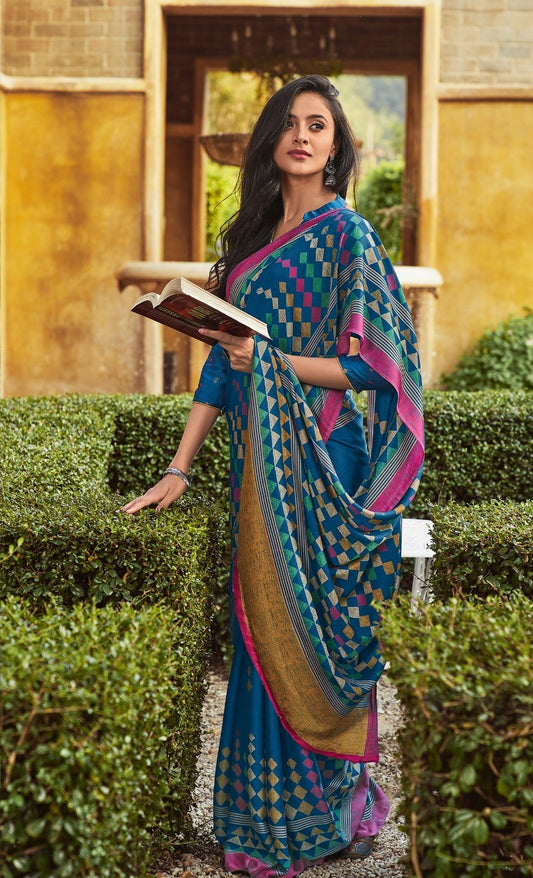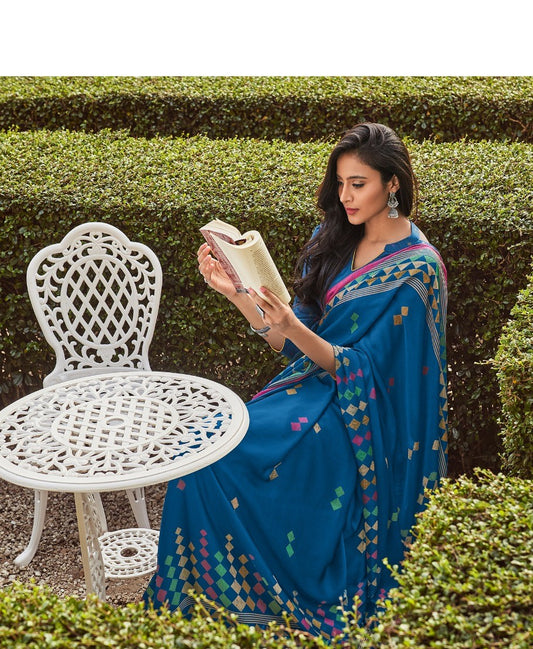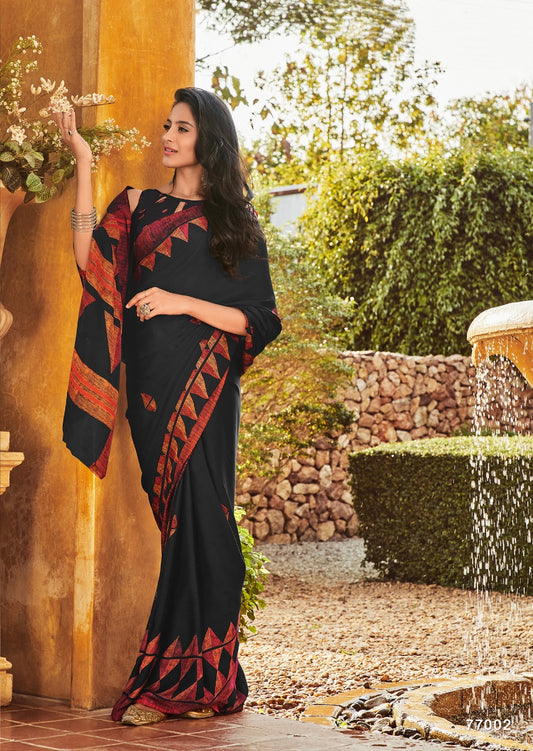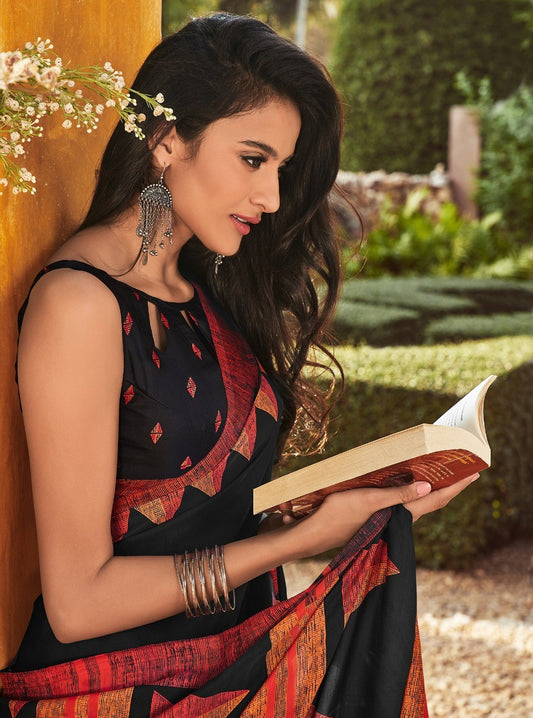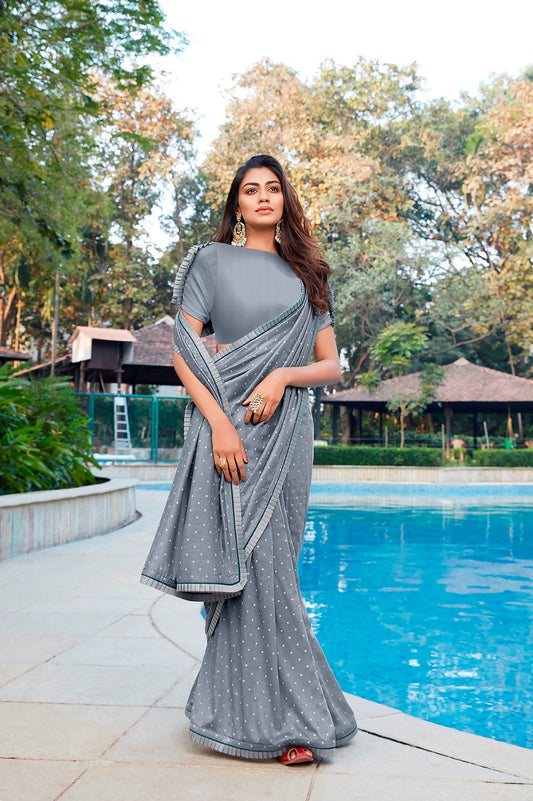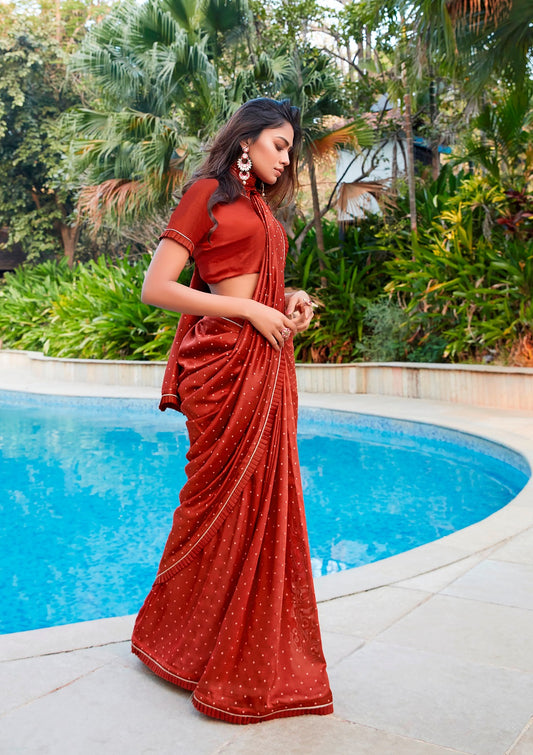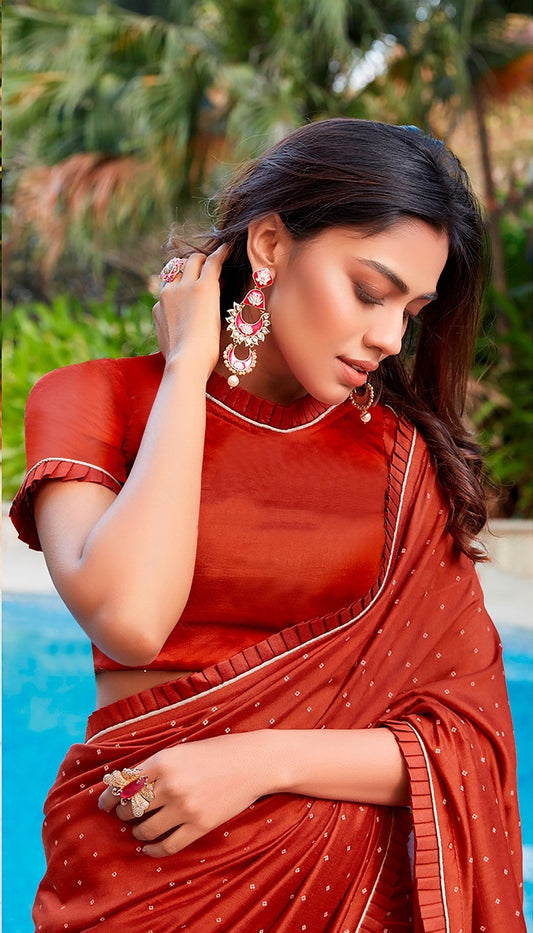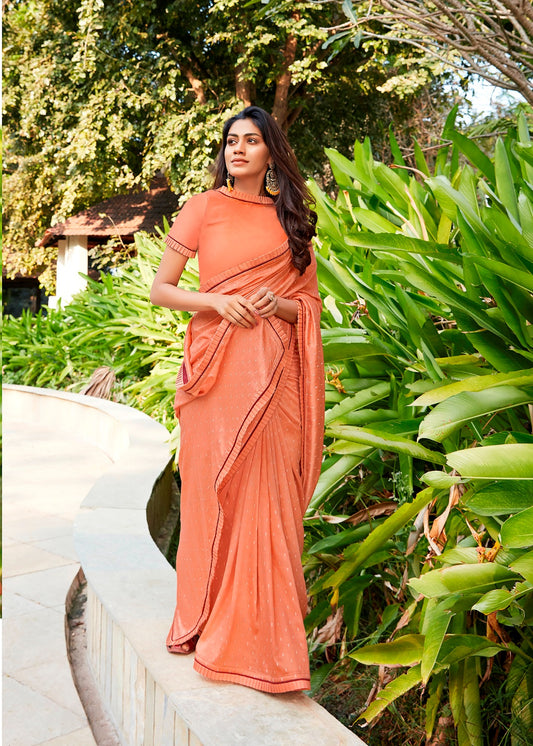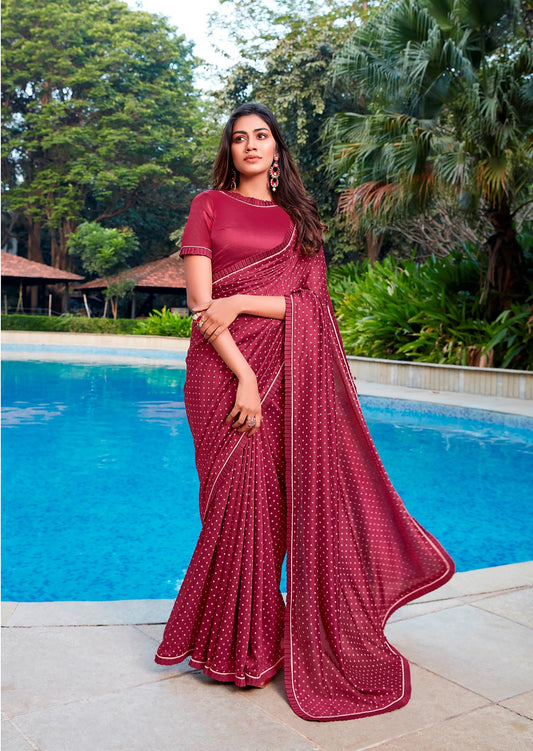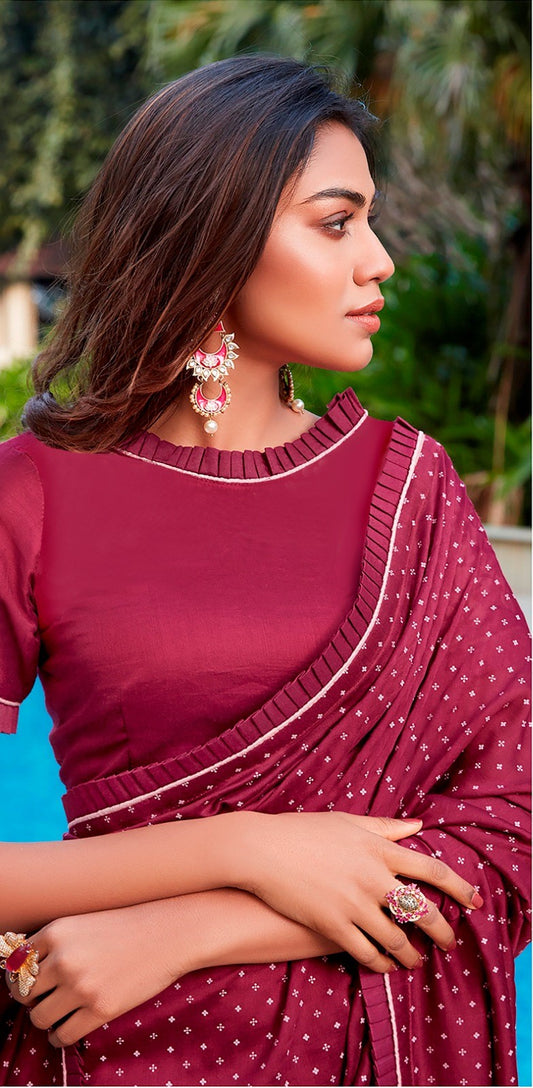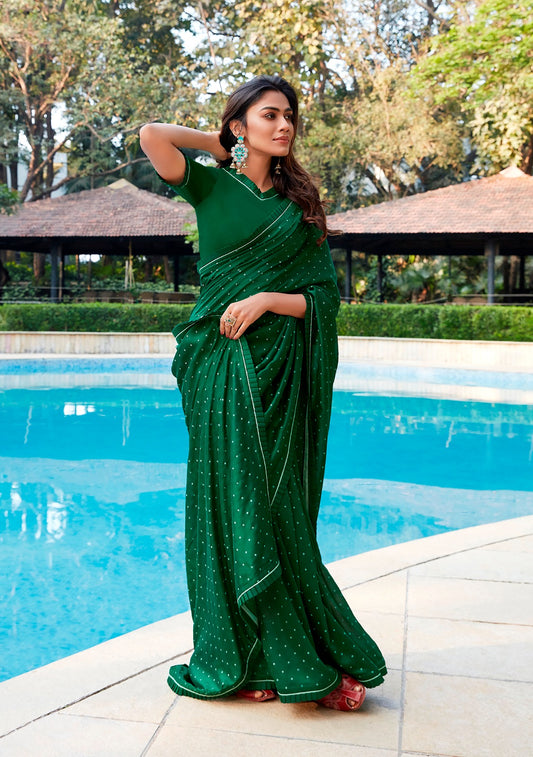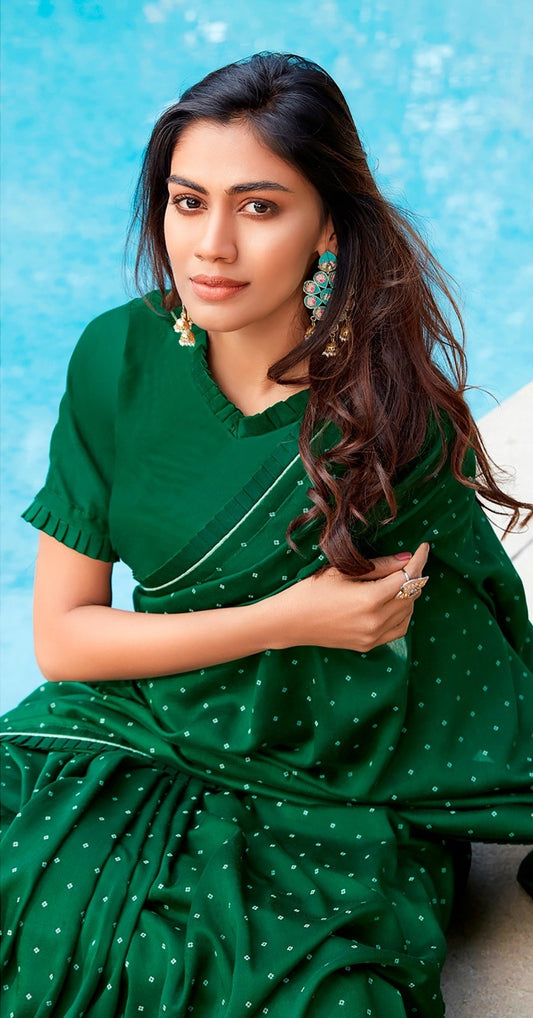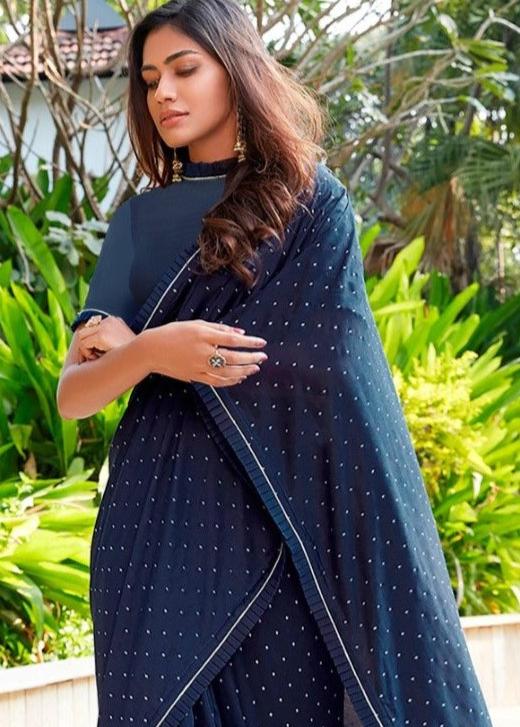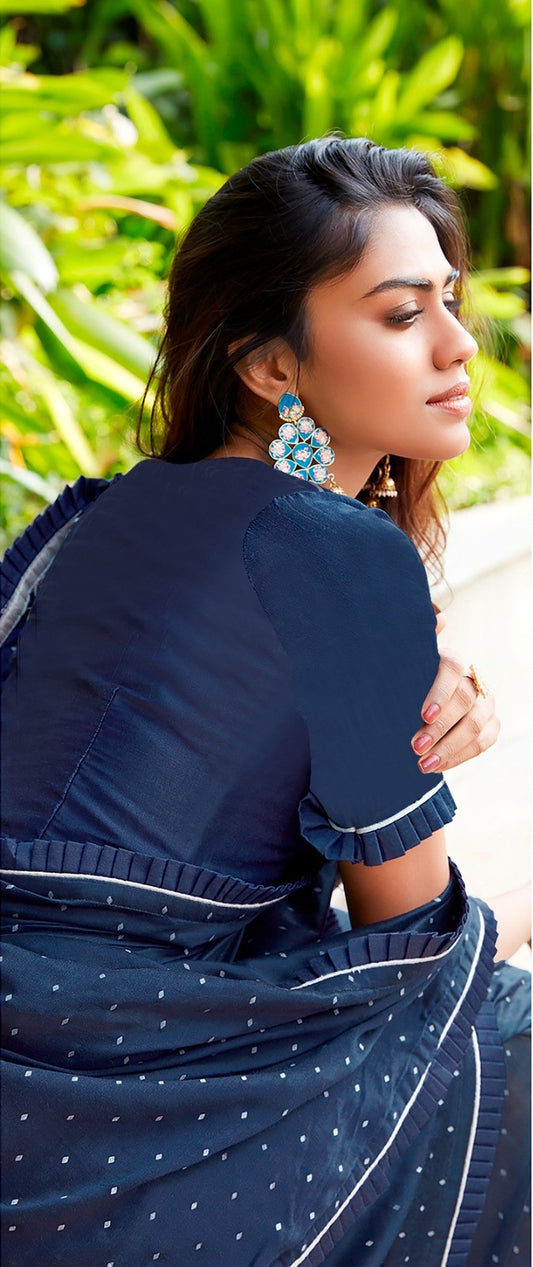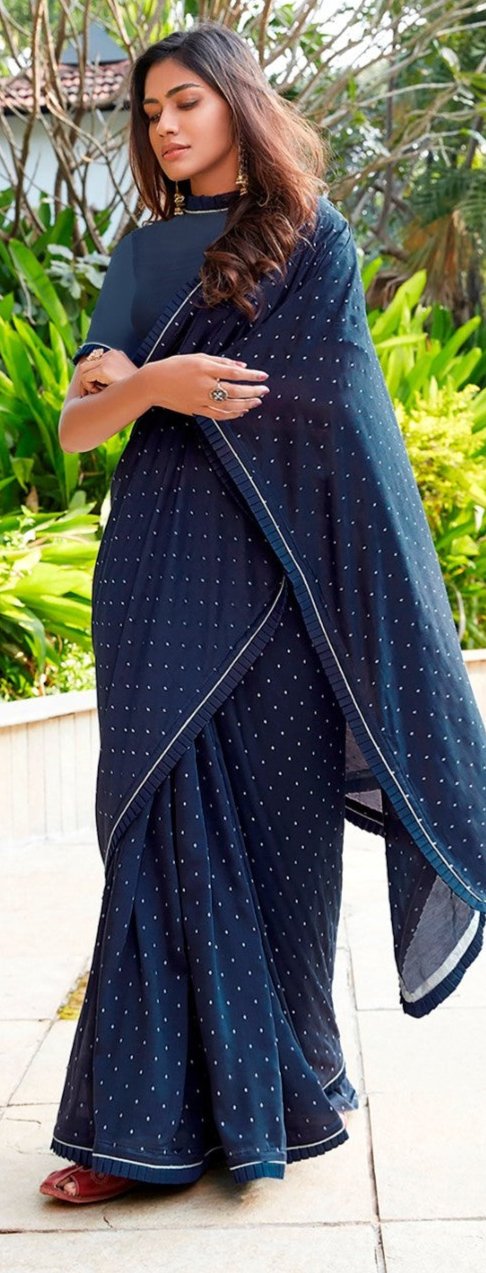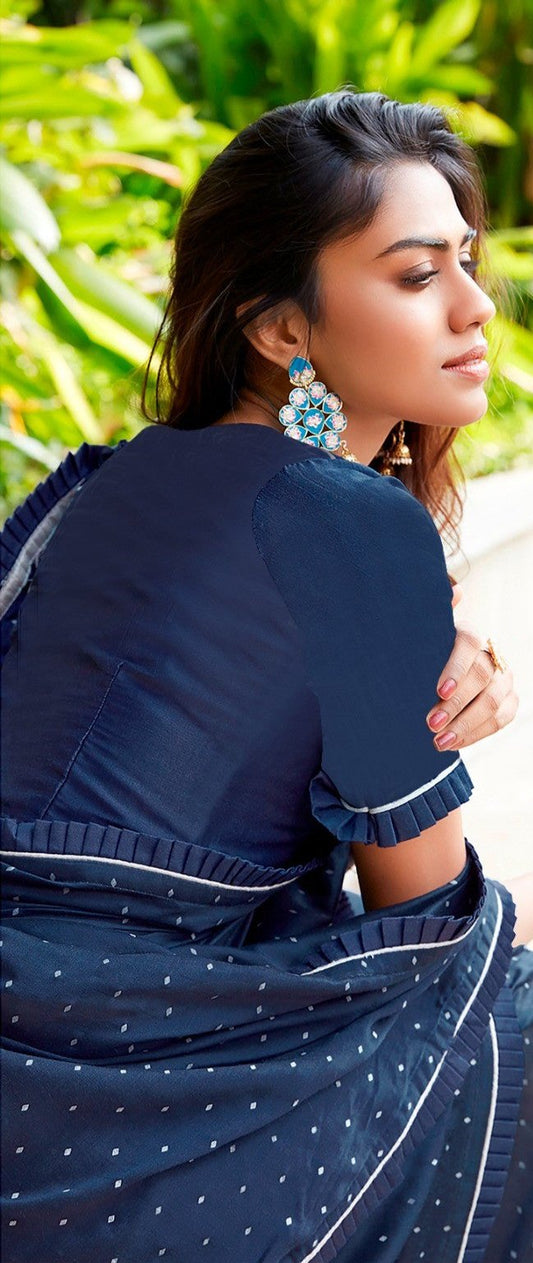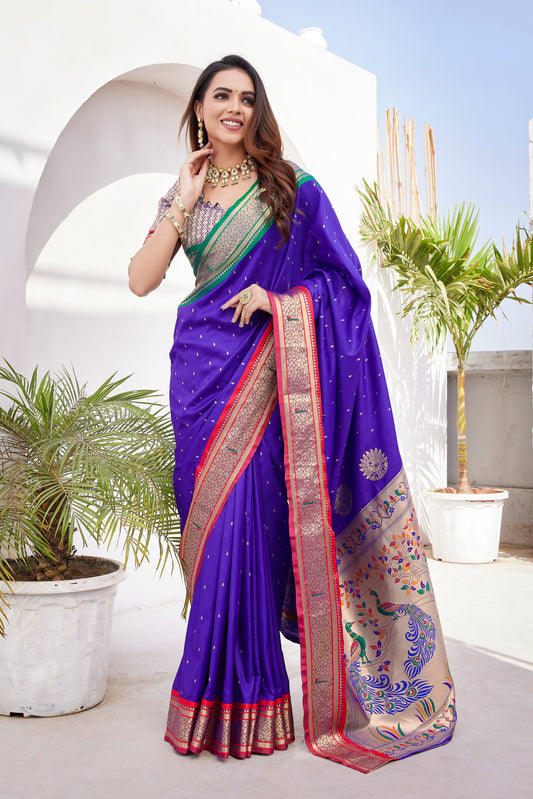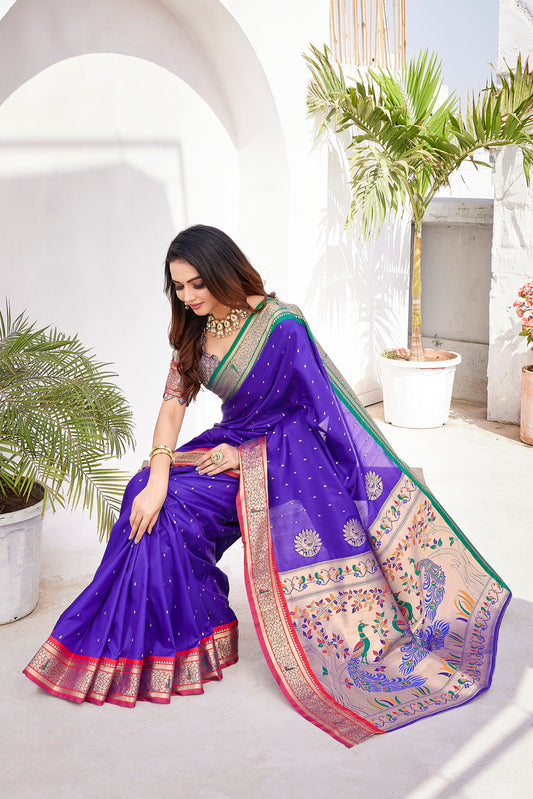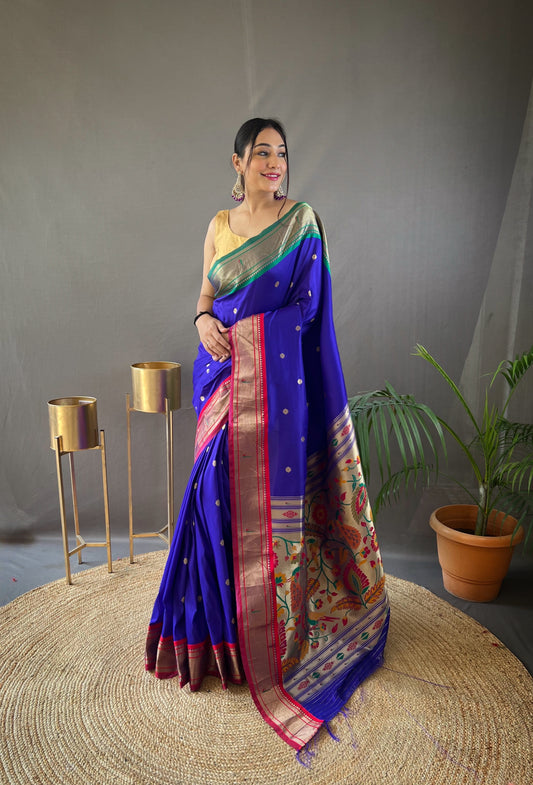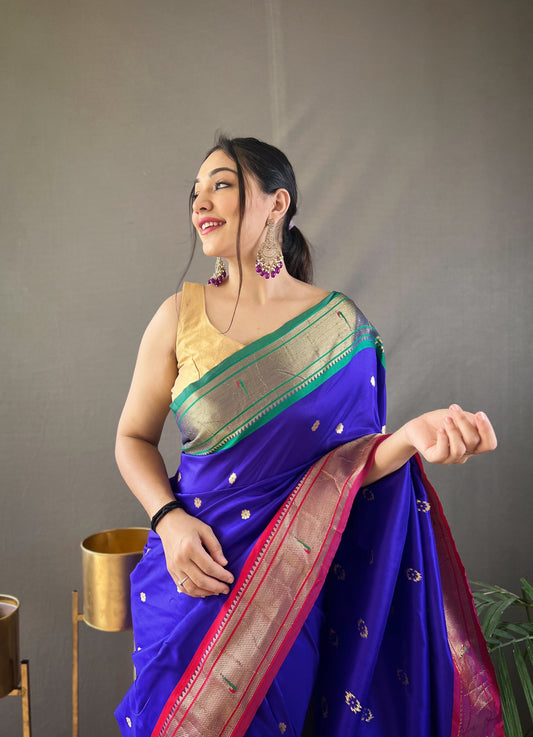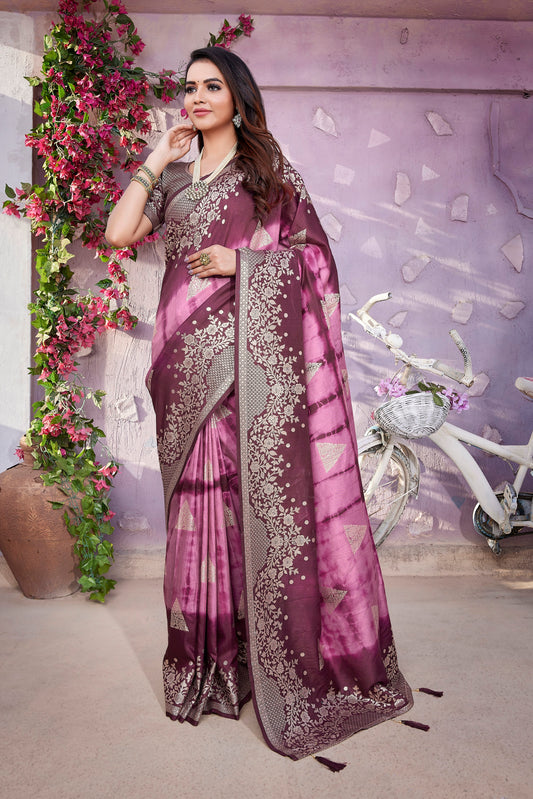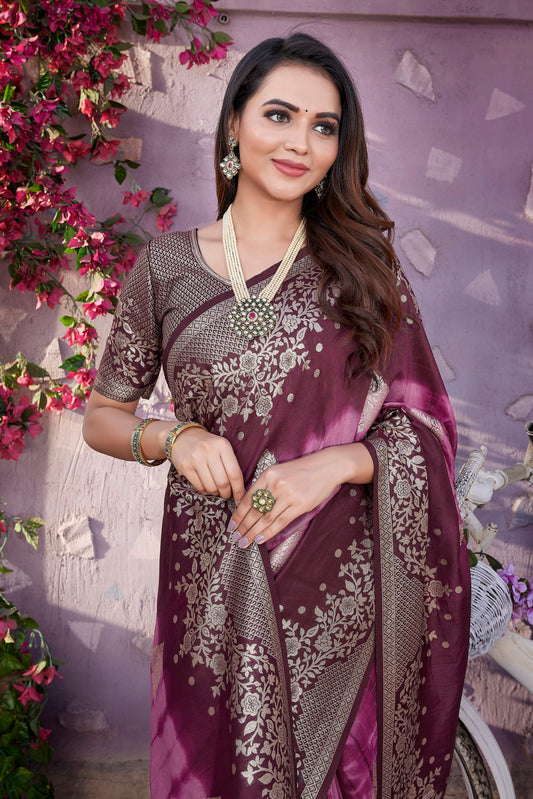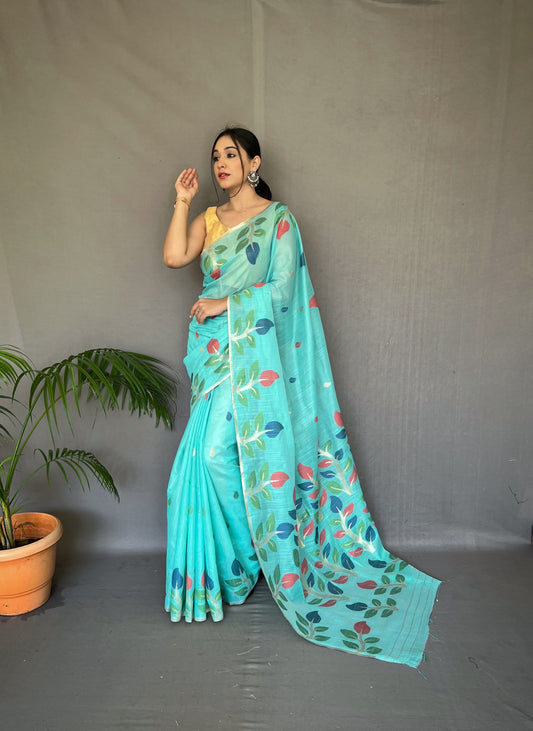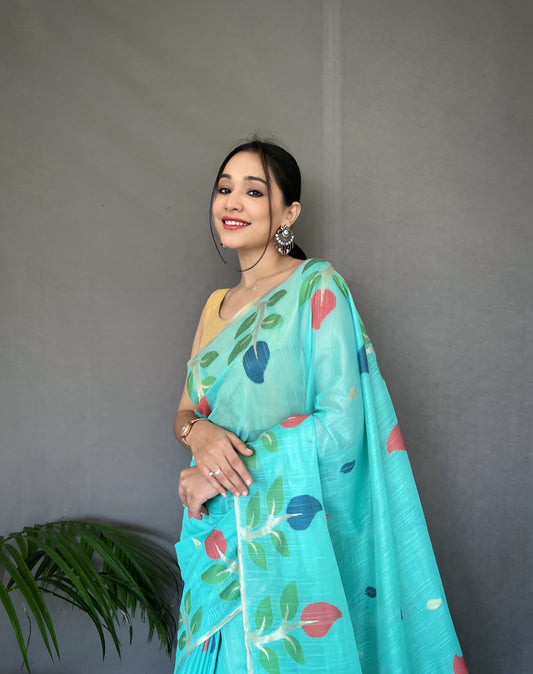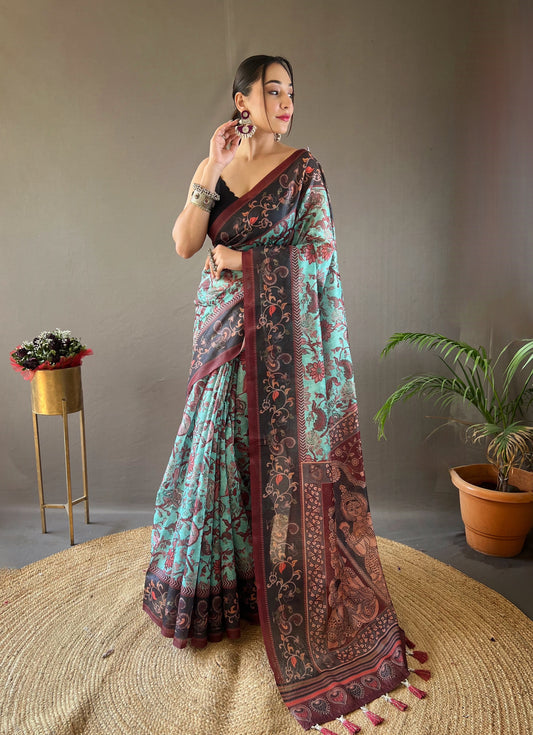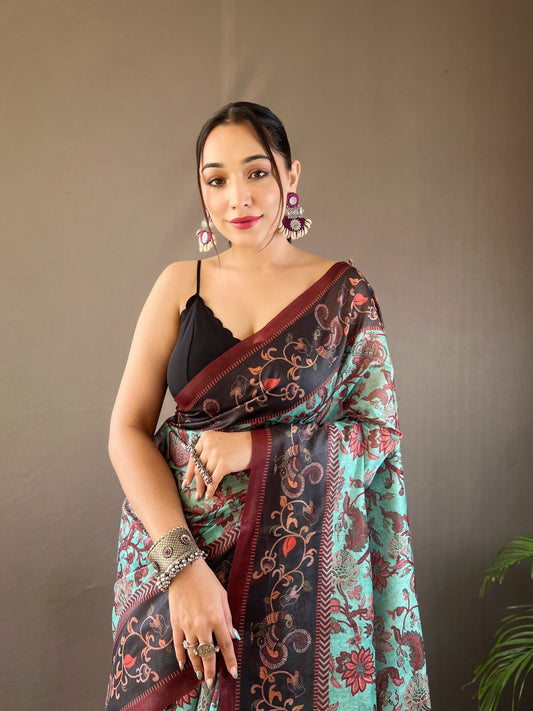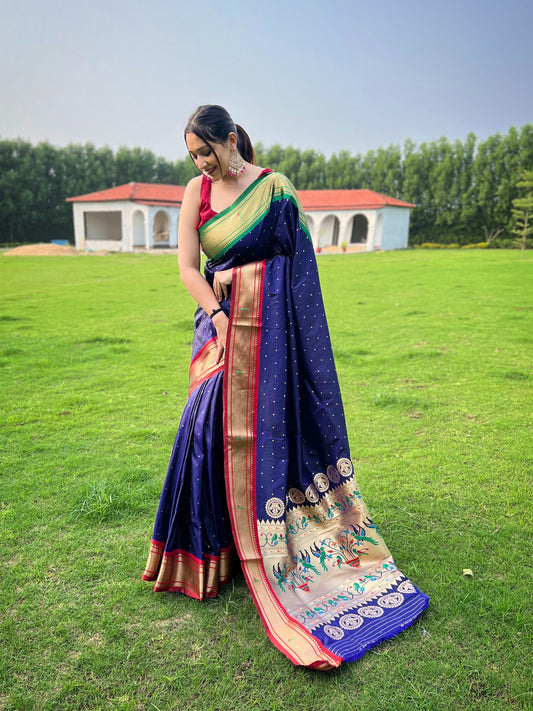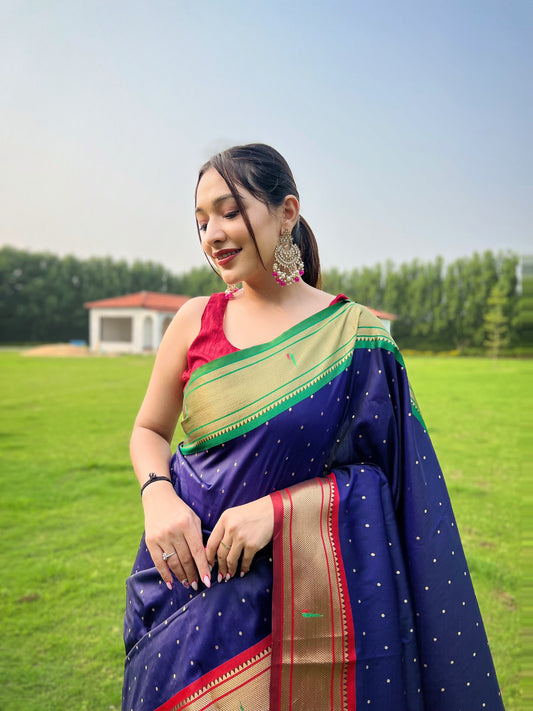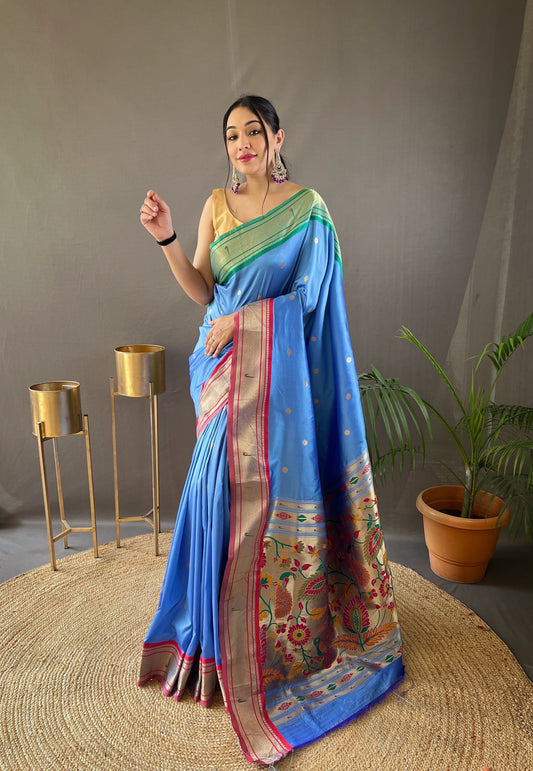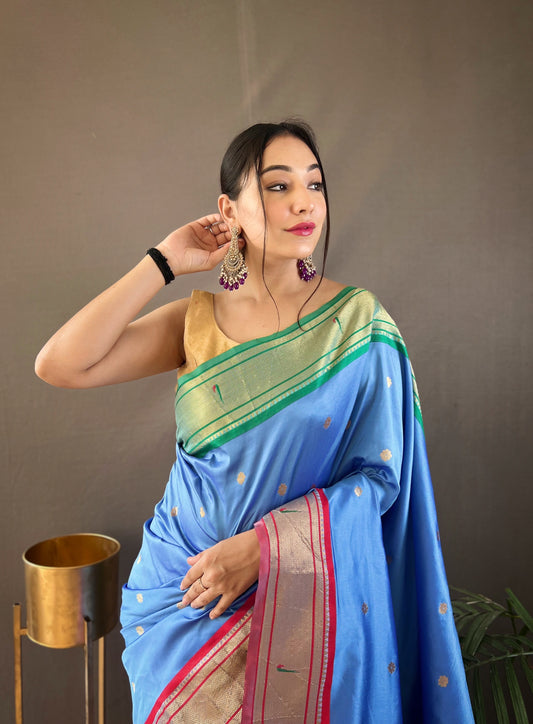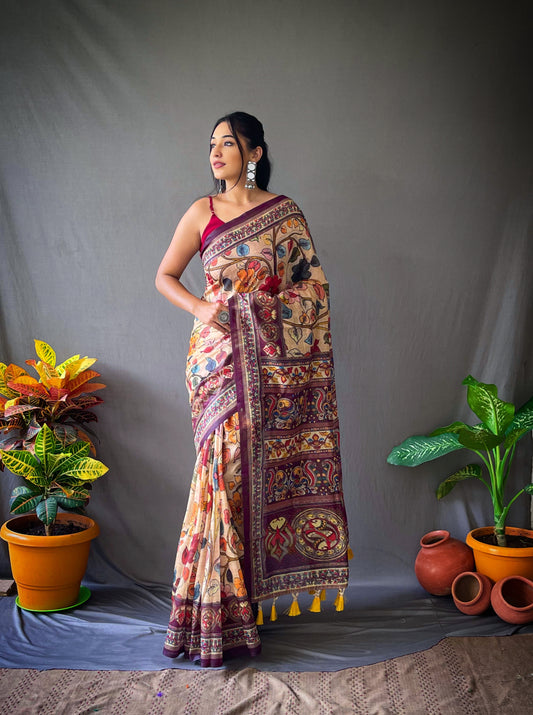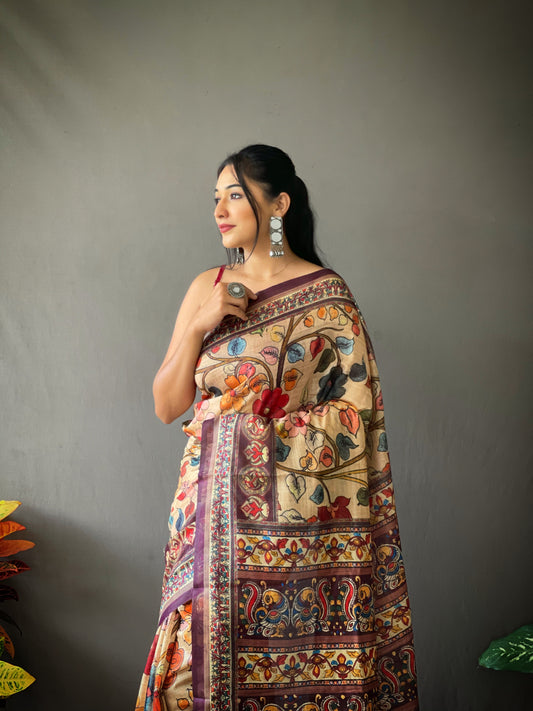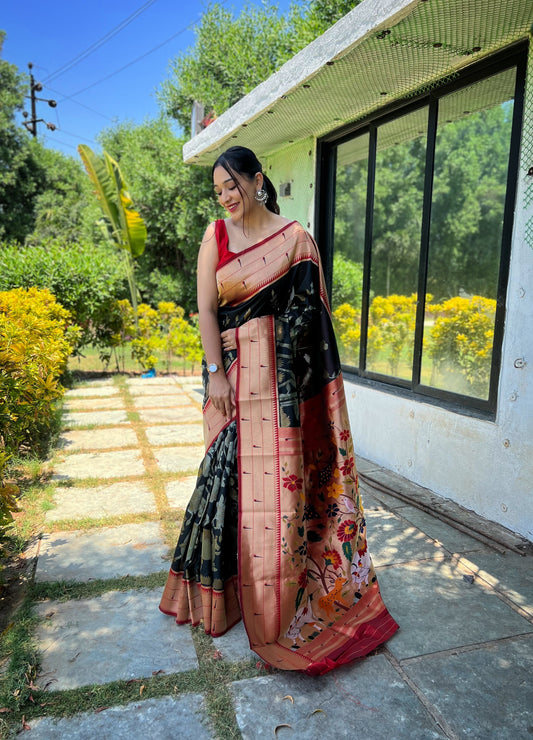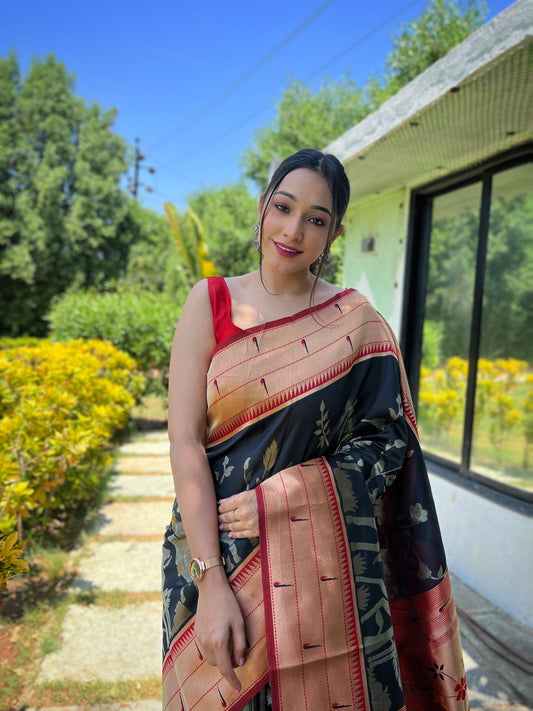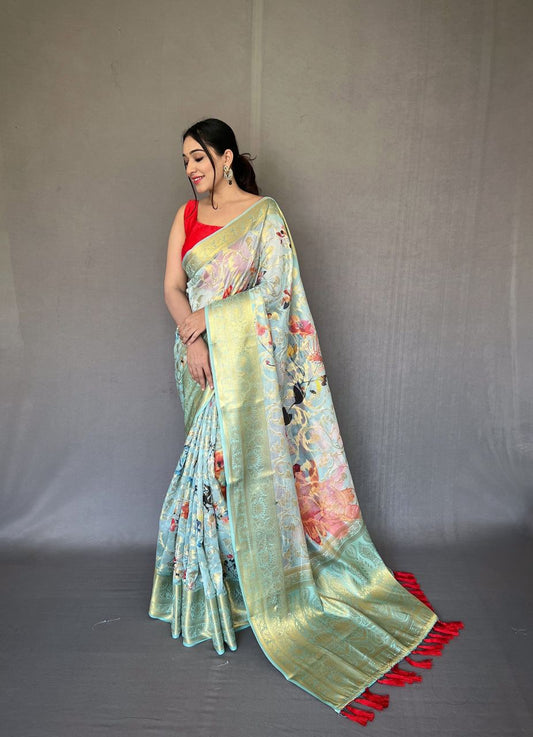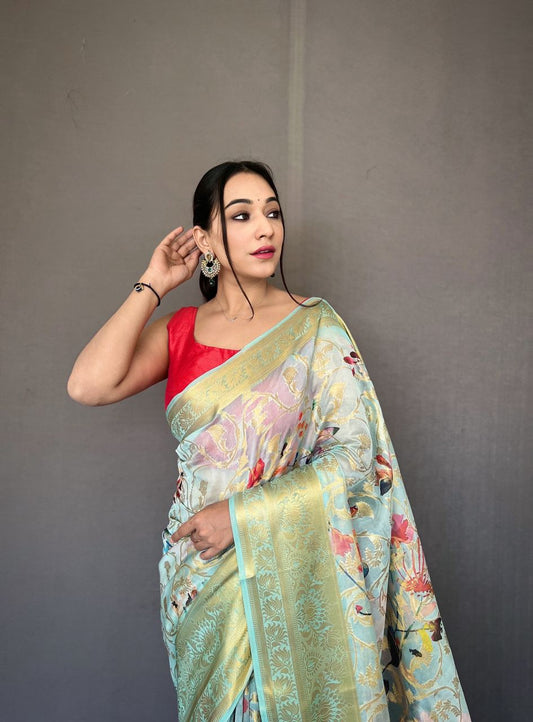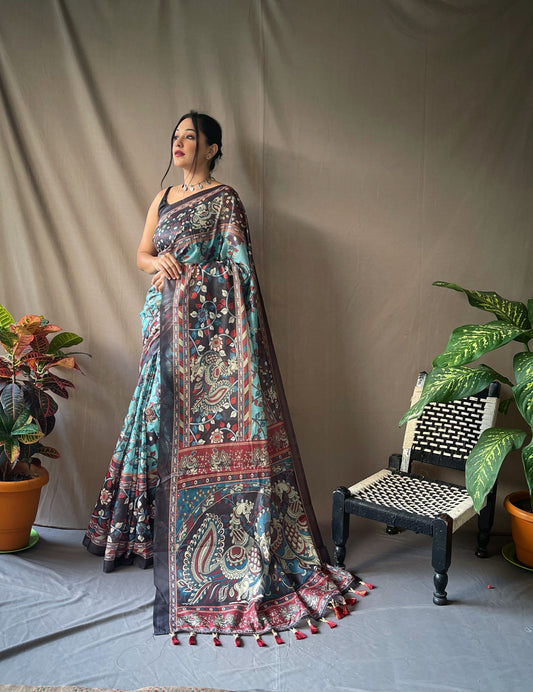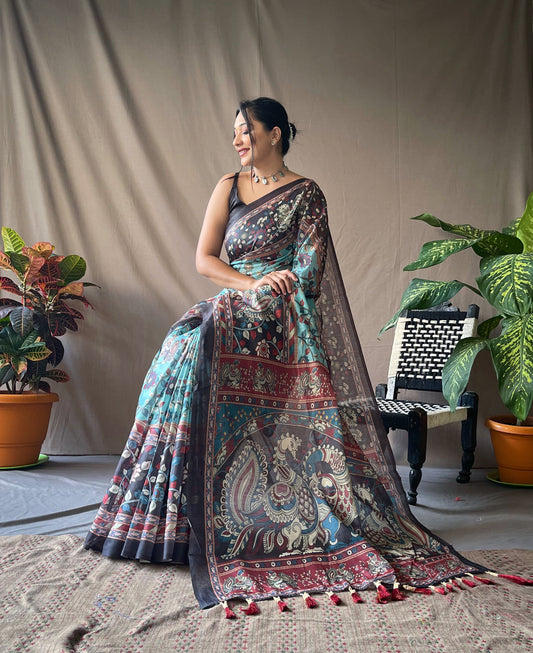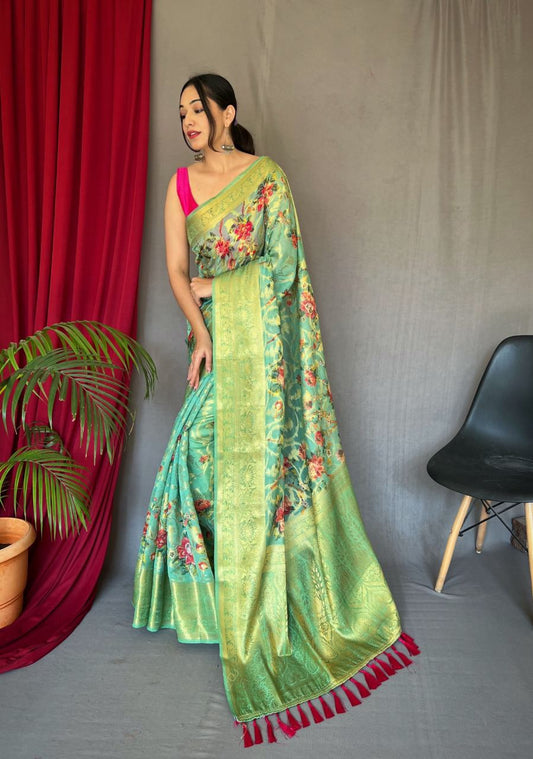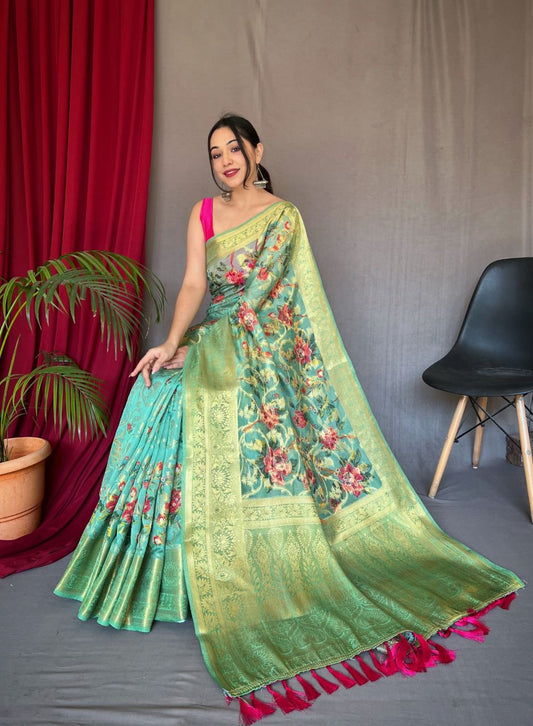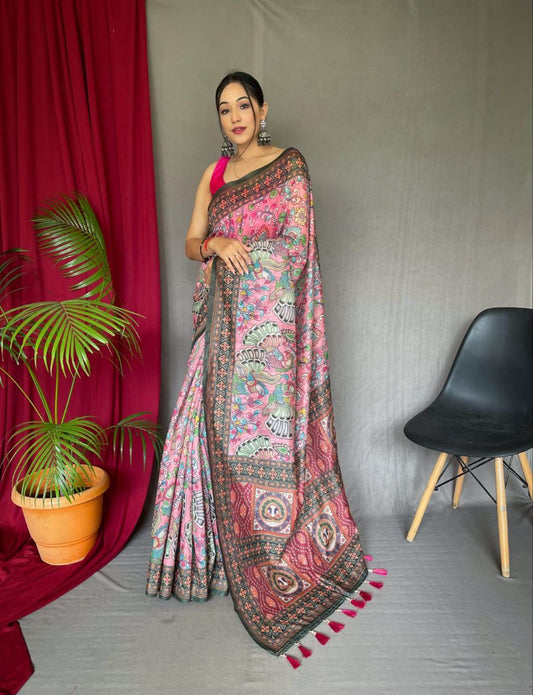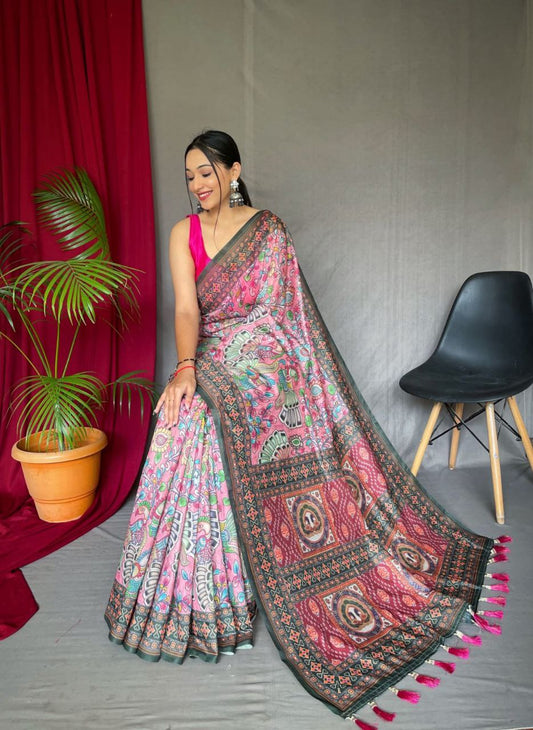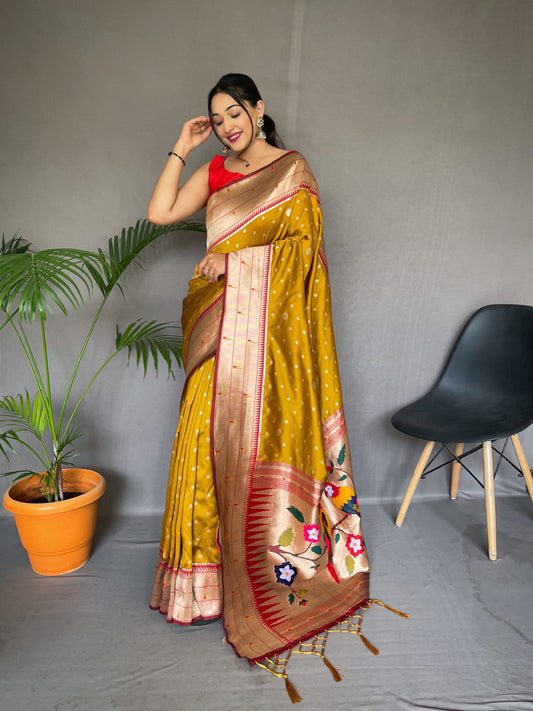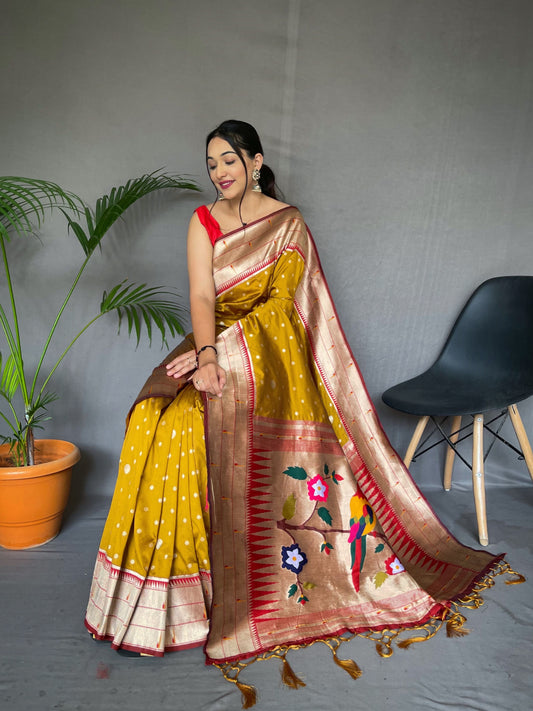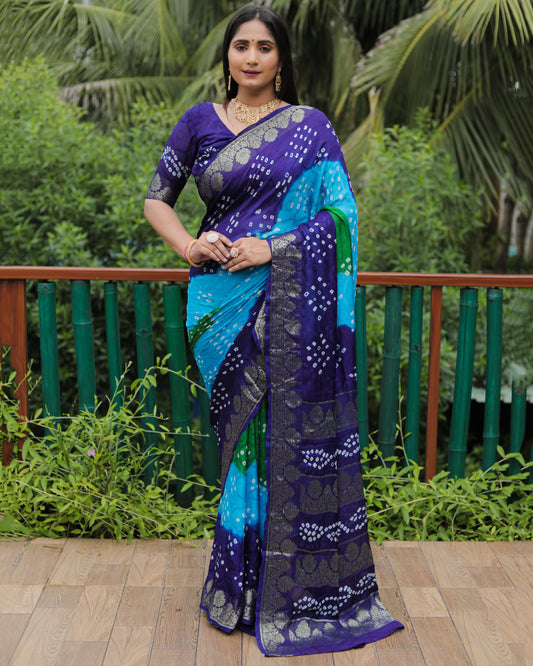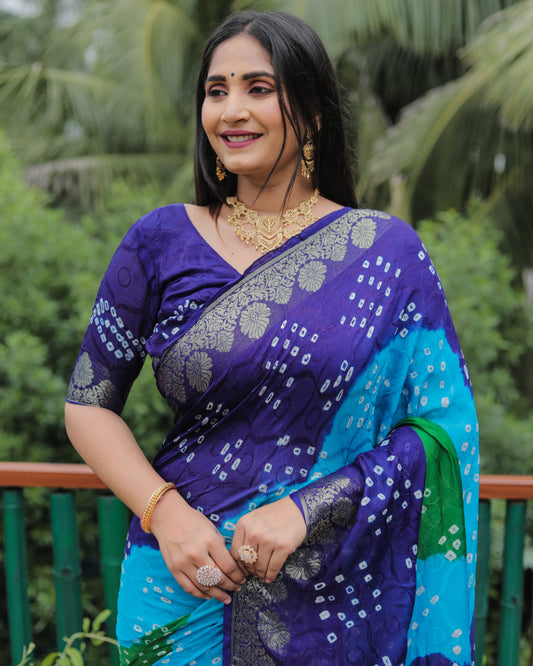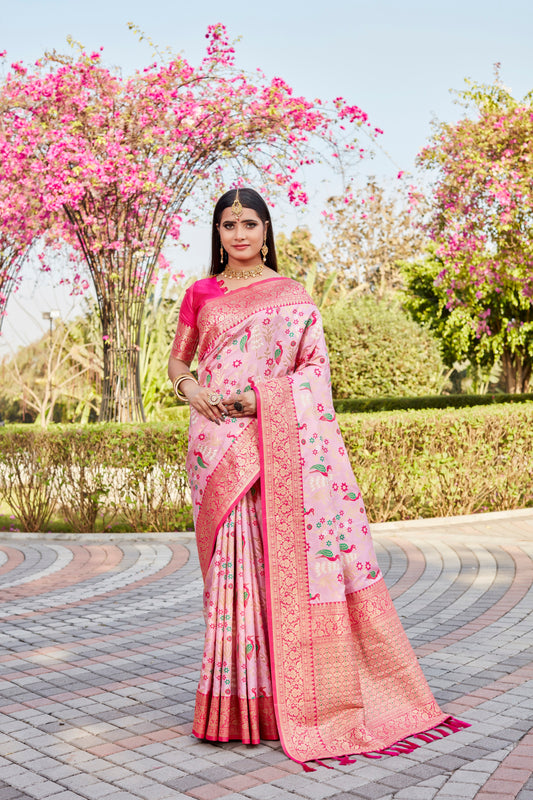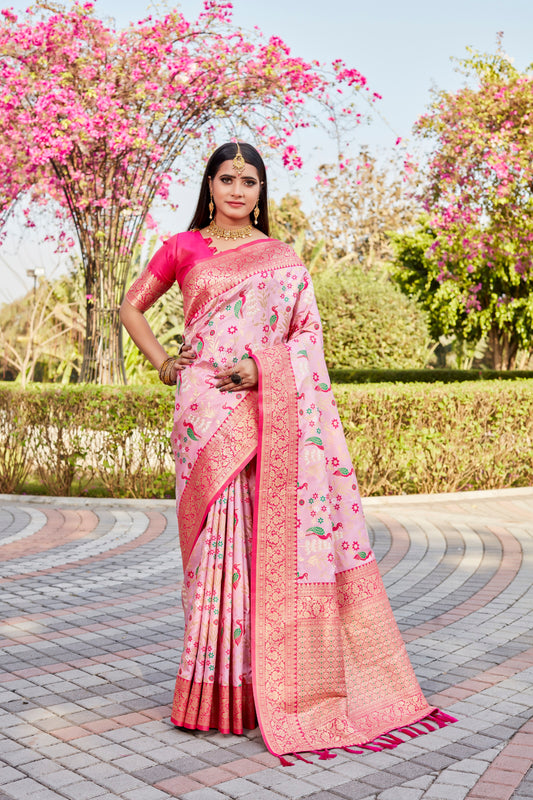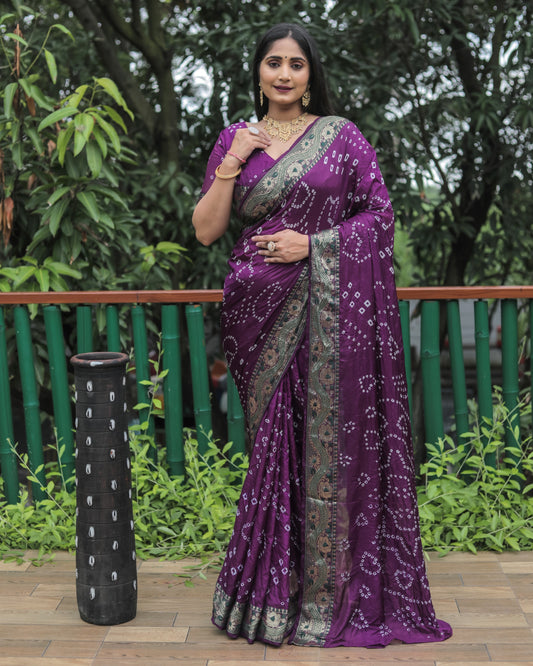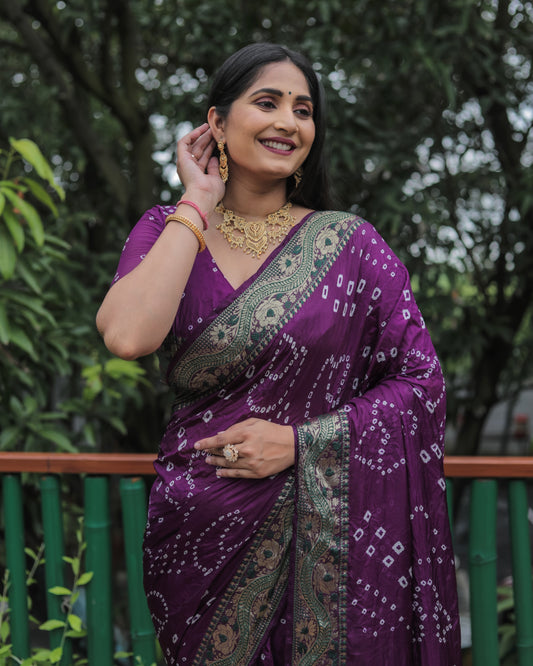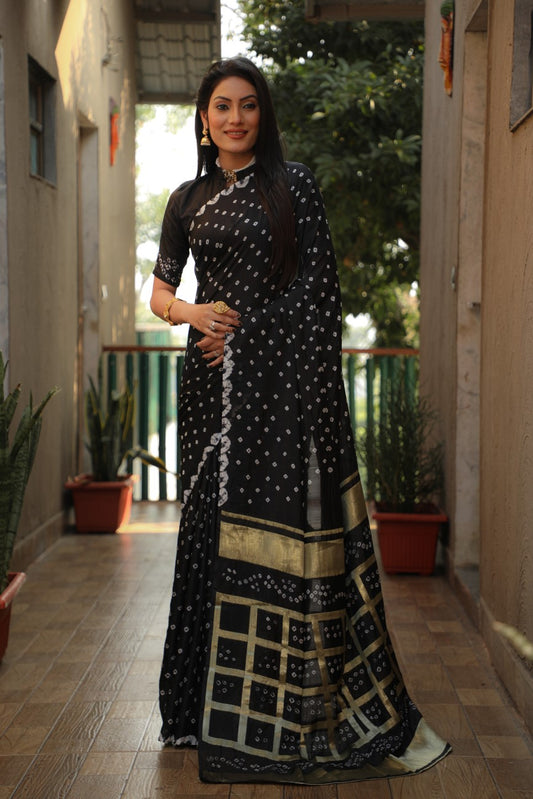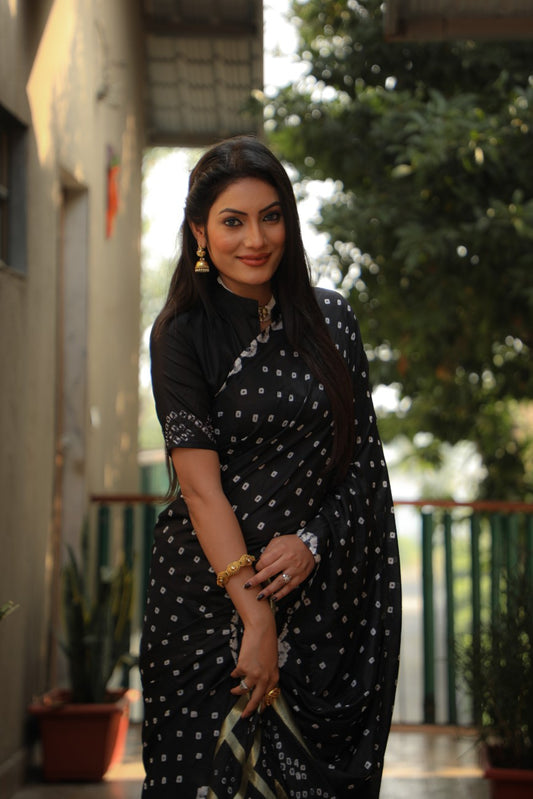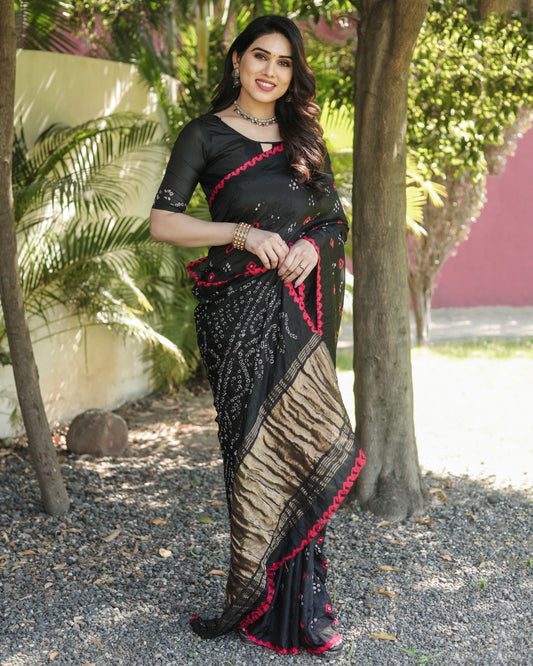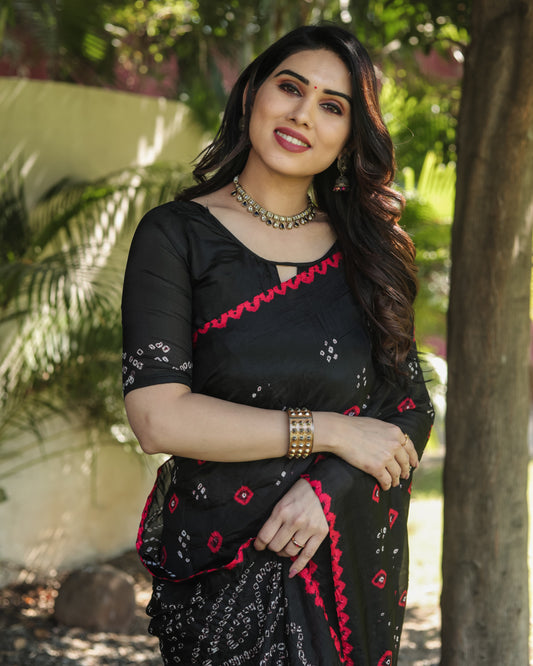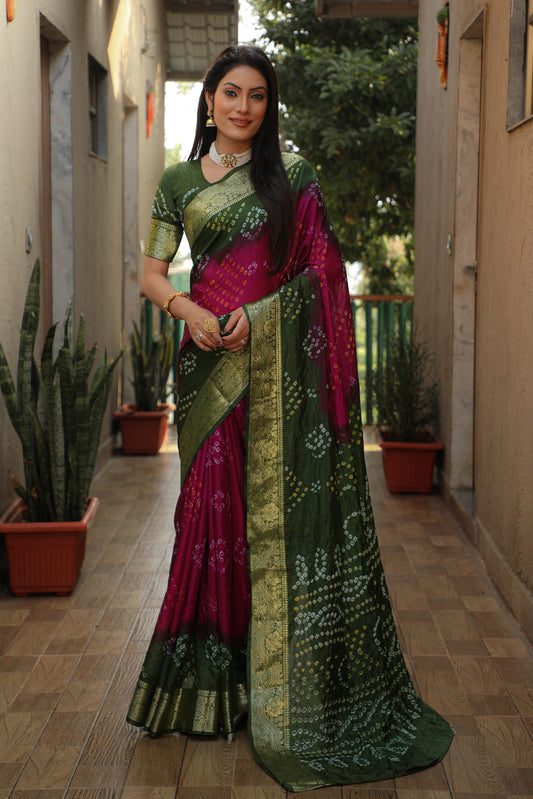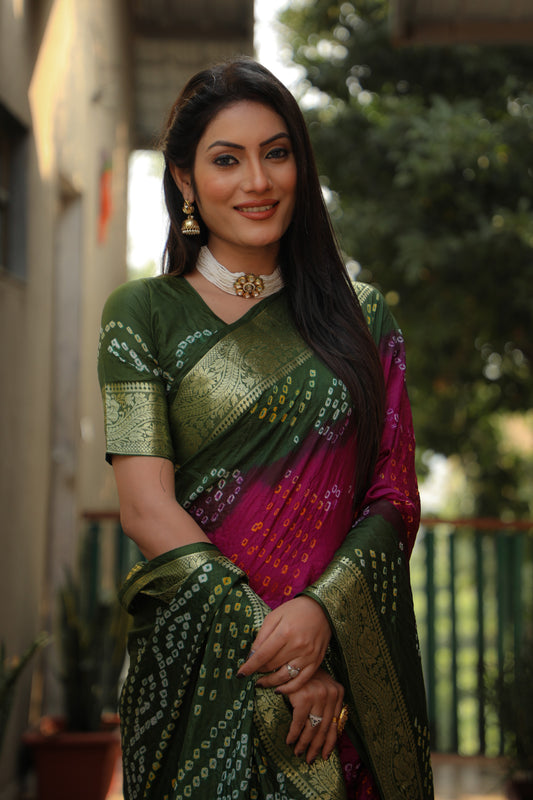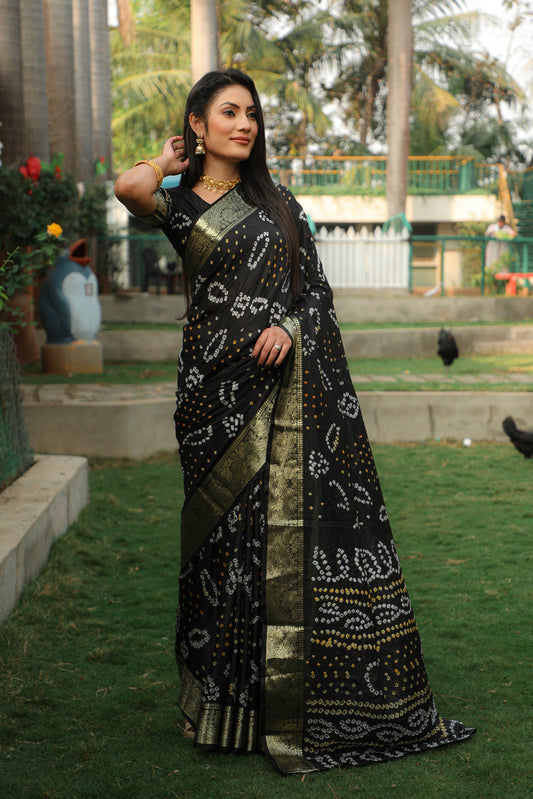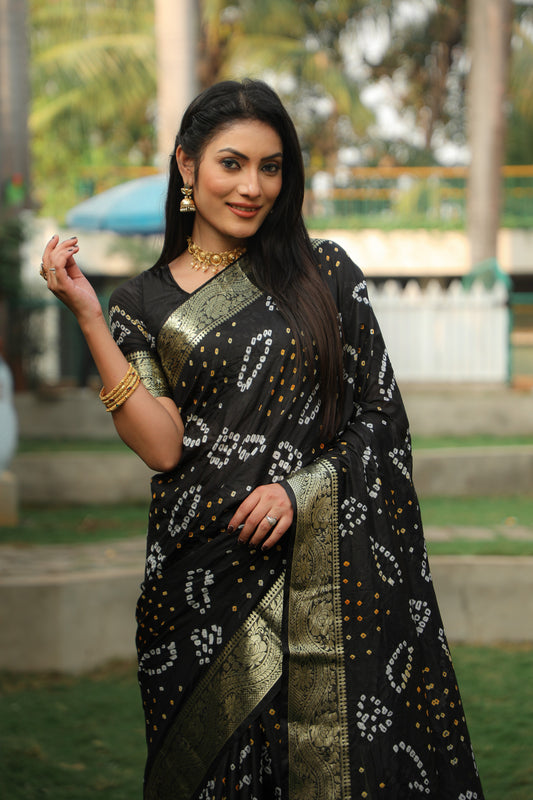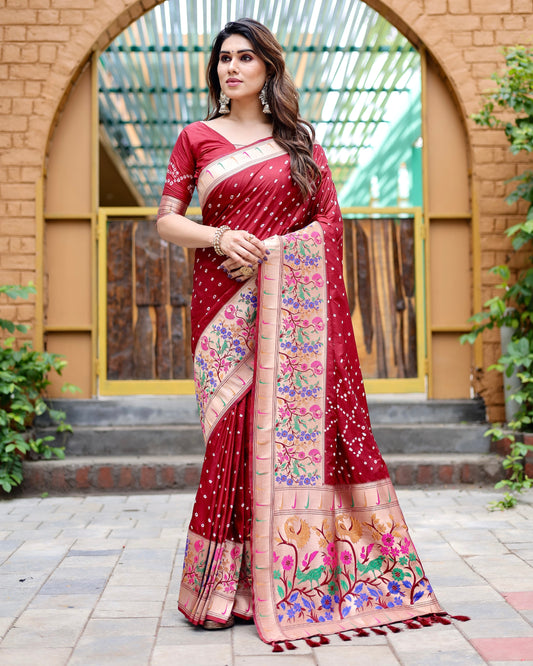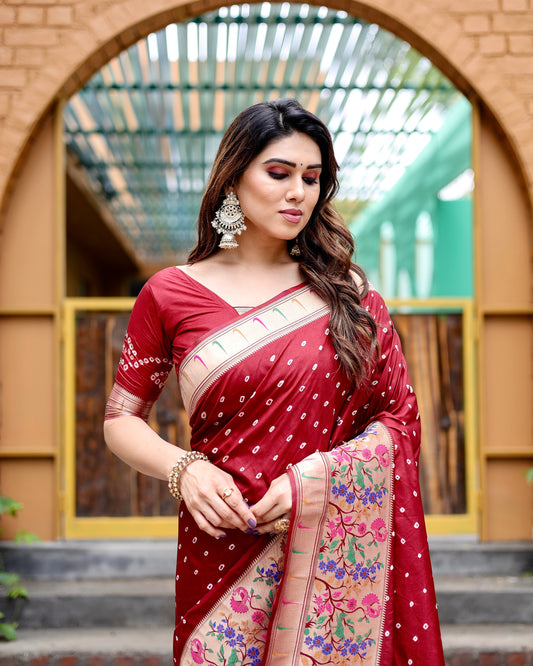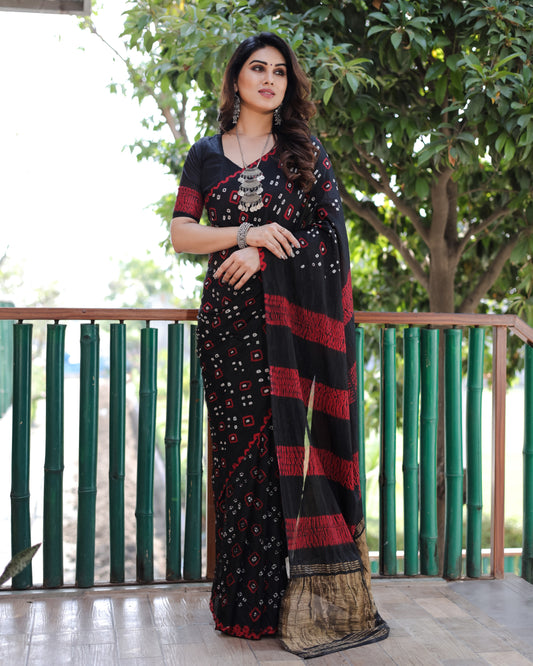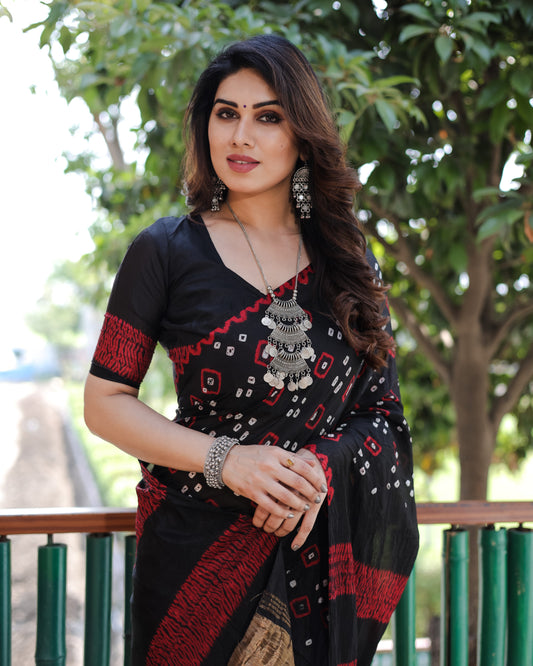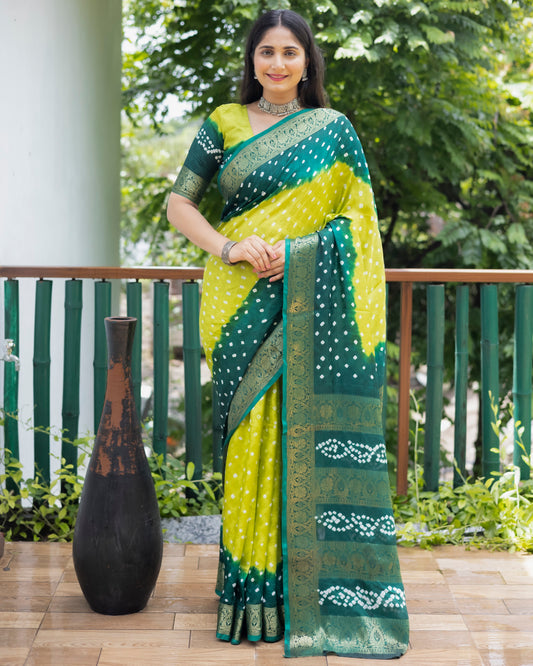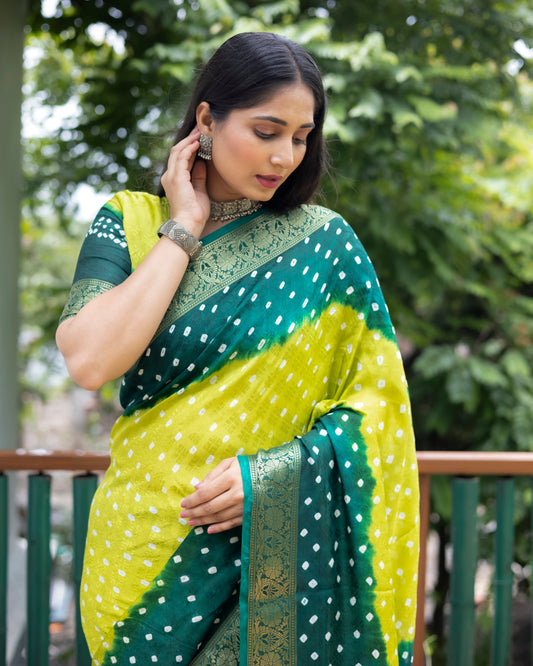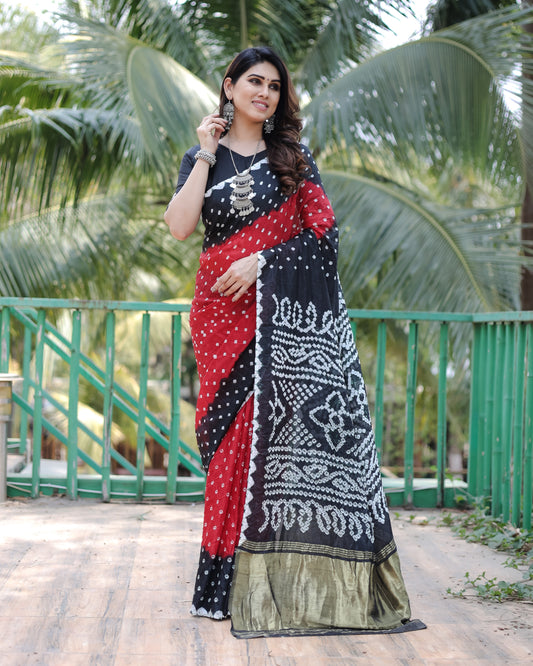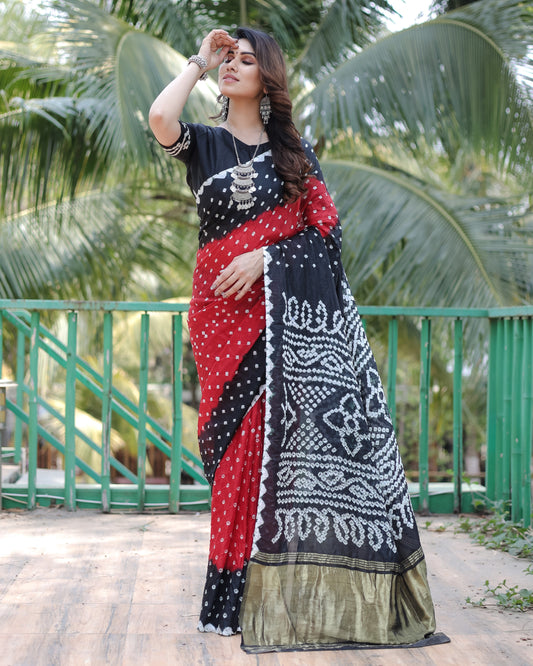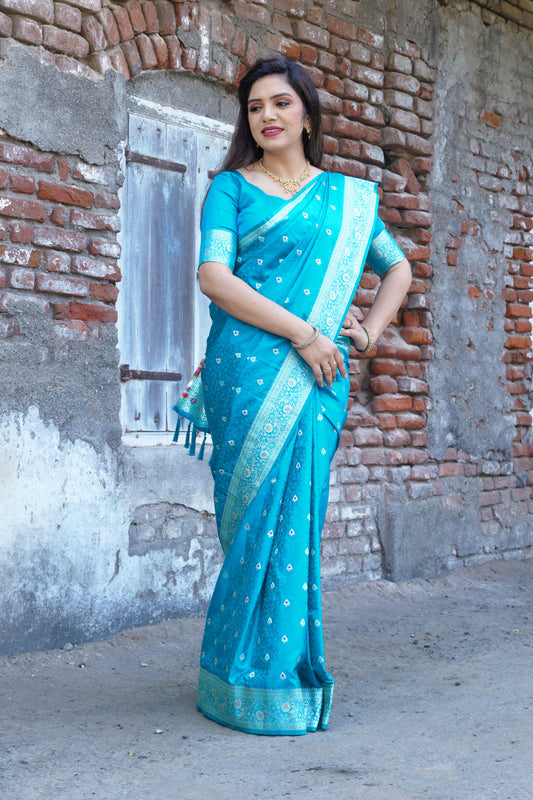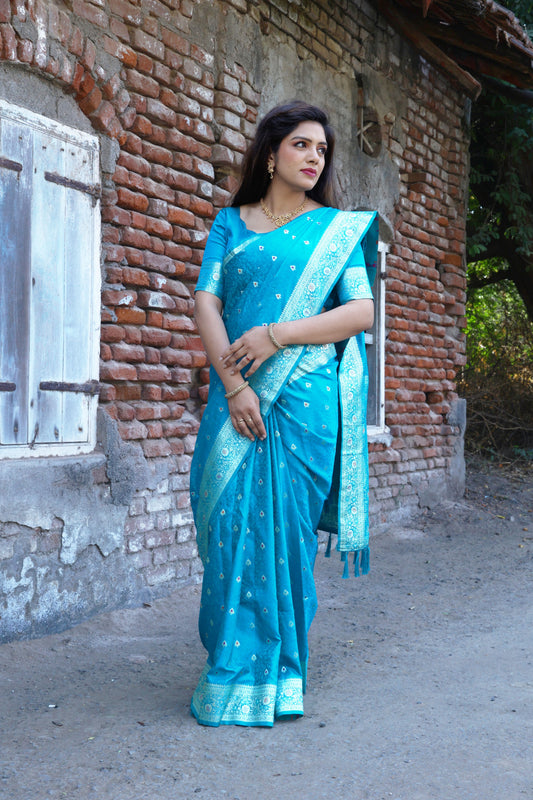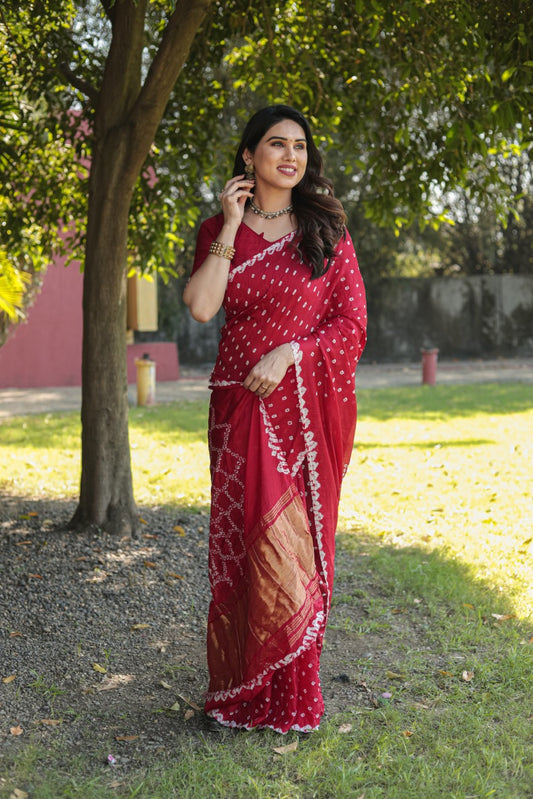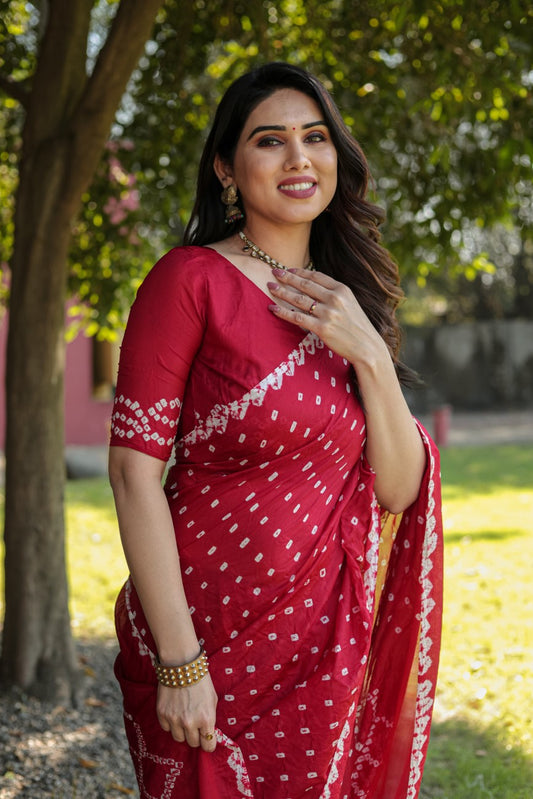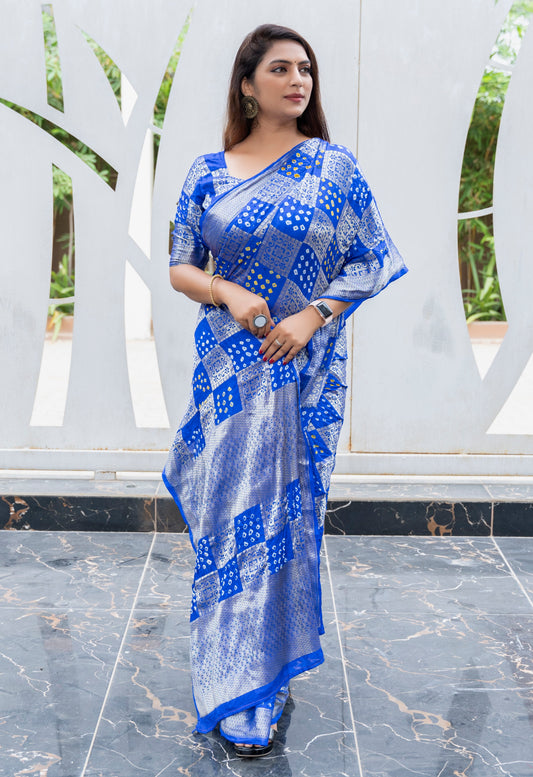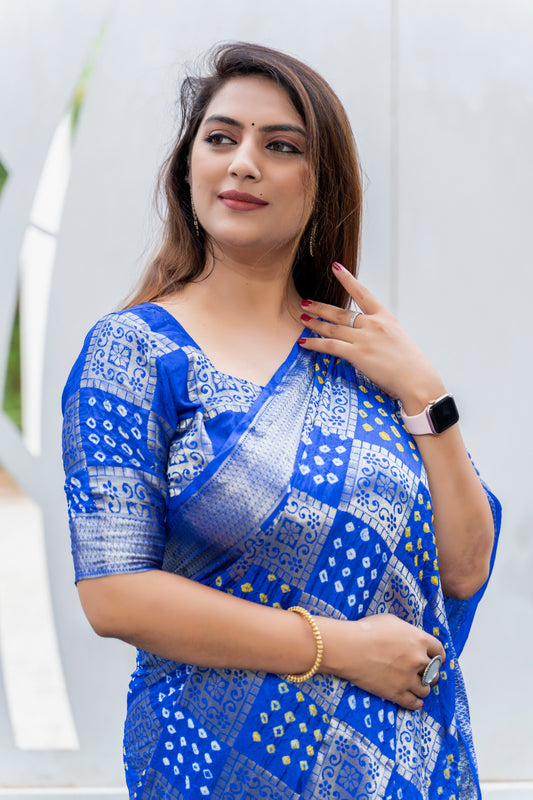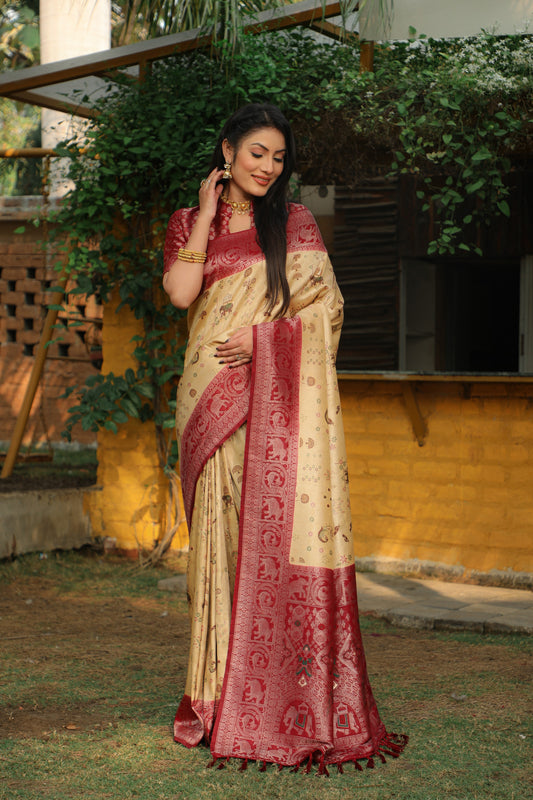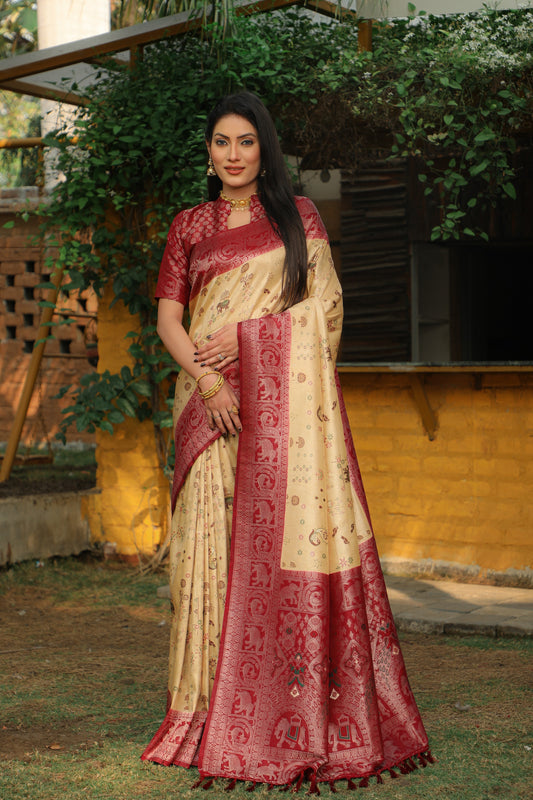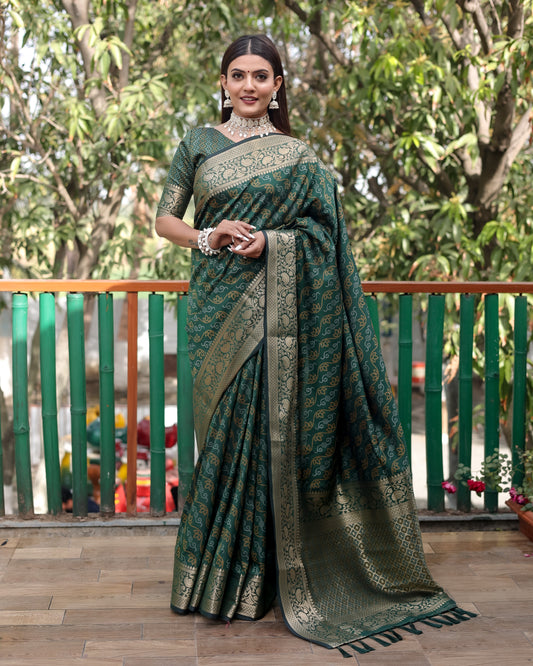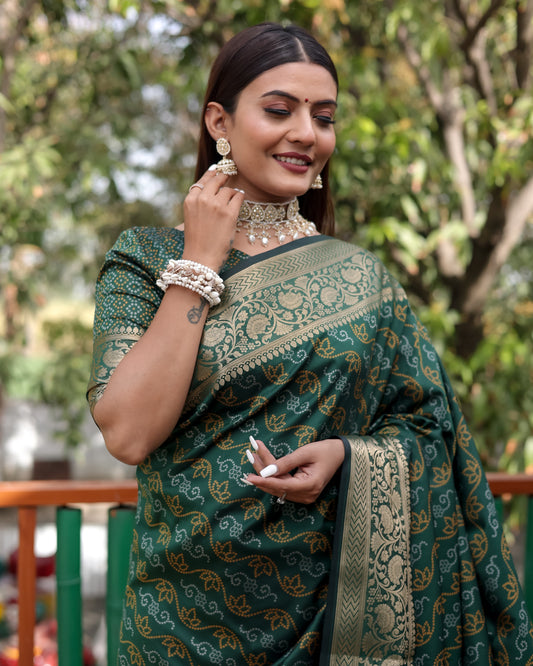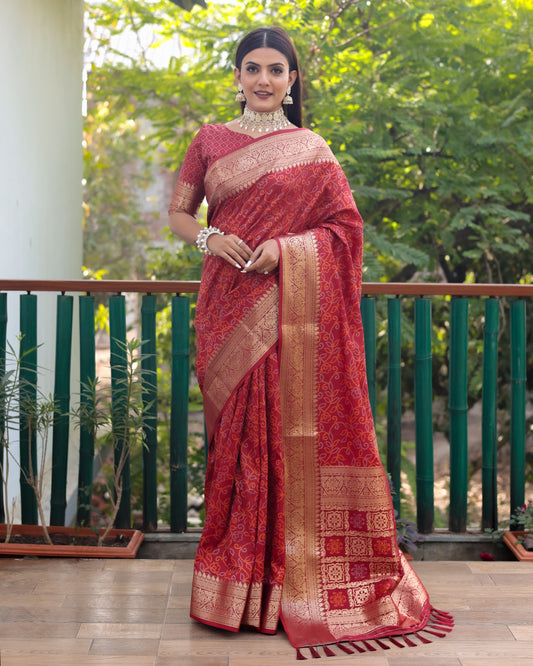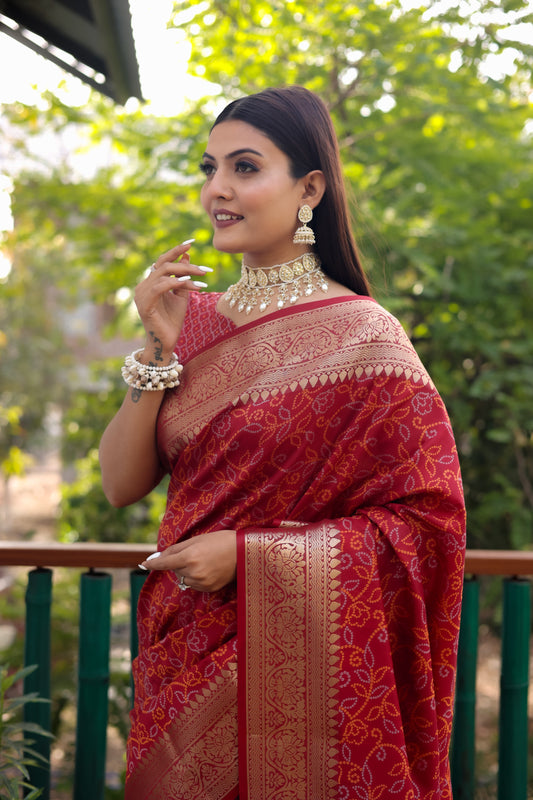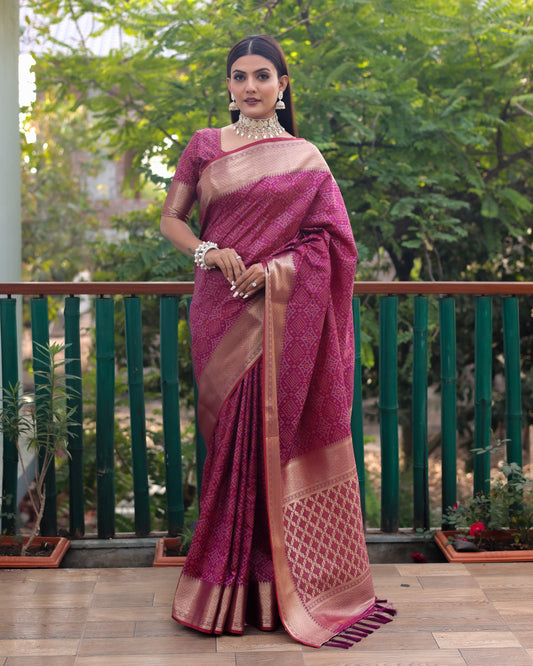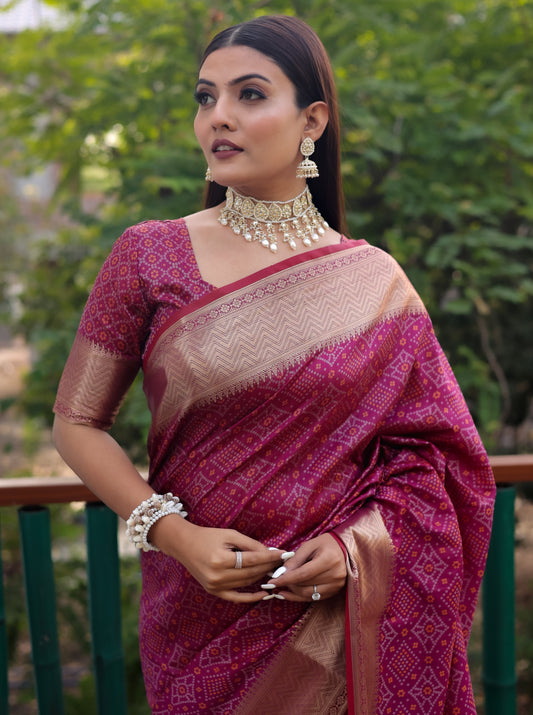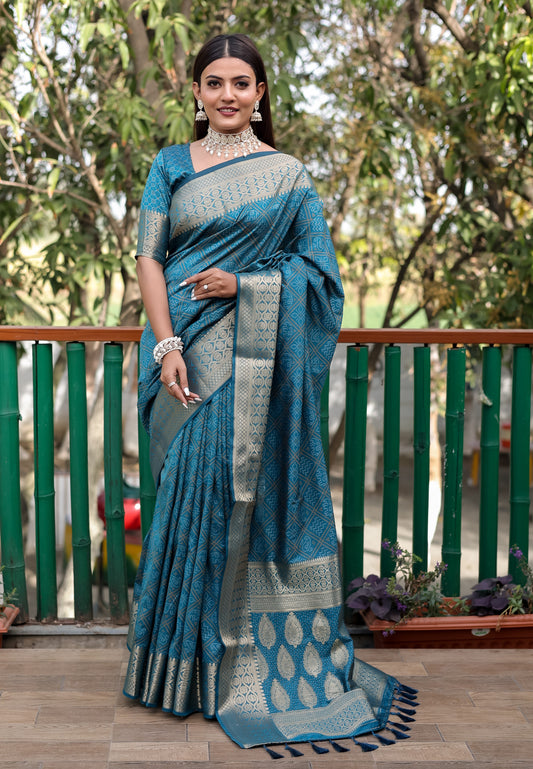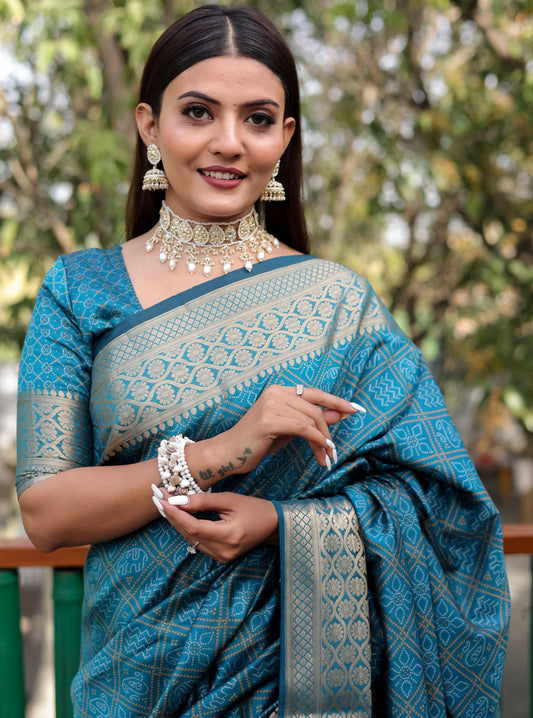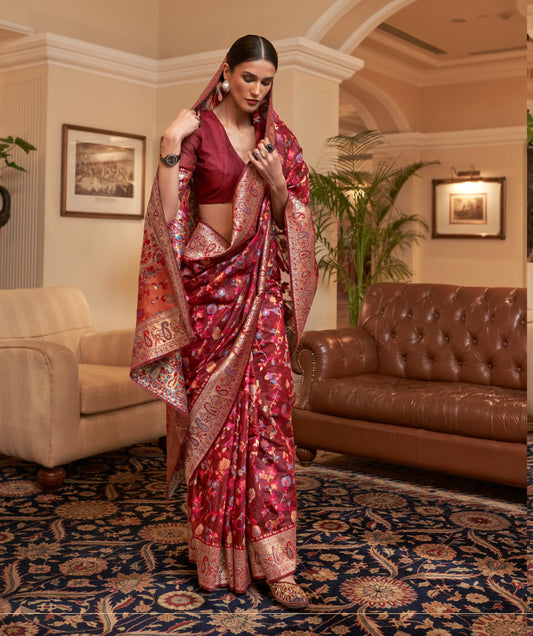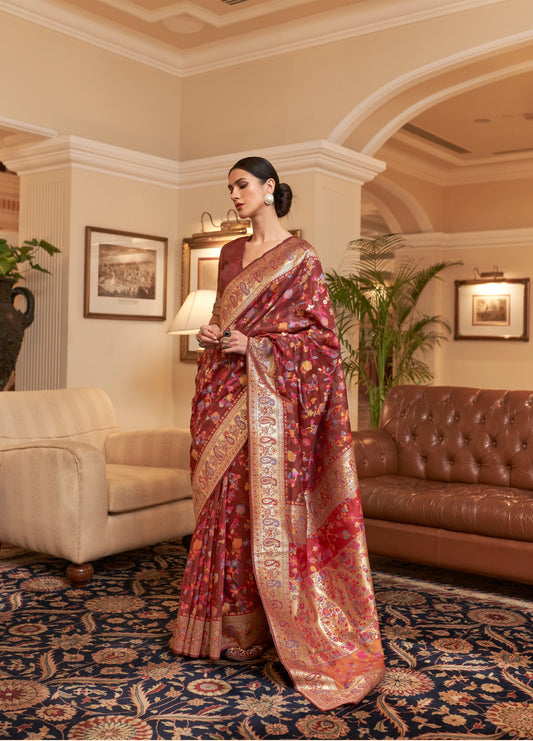-
Banarasi Silk With Weaving Golden Border Saree And Designer Blouse - RedVendor: VSareeProduct Name New Premium And High Quality ,Comfortable Banarasi Silk Drapes That Is Super Stylish And Pretty Saree Product Description This Stunning Silk Saree Is The Perfect Choice For Any Special Occasion. The Rich, Deep Colors Of The Saree Is Complemented By Intricate Gold Yellow Print That Runs Along The Border...
- Regular price
- From Rs. 2,969.01
- Regular price
-
Rs. 5,939.01 - Sale price
- From Rs. 2,969.01
- Unit price
- per
-
Vsaree Pink Cotton saree And Printed Border & Printed Pallu With Blouse Piece - PinkVendor: VSareeProduct Name New Premium And High Quality ,Comfortable Cotton Drapes That Is Super Stylish And Pretty Saree Product Description This Stunning Silk Saree Is The Perfect Choice For Any Special Occasion. The Rich, Deep Colors Of The Saree Is Complemented By Intricate Gold Yellow Print That Runs Along The Border...
- Regular price
- From Rs. 888.03
- Regular price
-
Rs. 1,776.06 - Sale price
- From Rs. 888.03
- Unit price
- per
-
Vsaree Maroon Cotton saree And Printed Border & Printed Pallu With Blouse Piece - MaroonVendor: VSareeProduct Name New Premium And High Quality ,Comfortable Cotton Drapes That Is Super Stylish And Pretty Saree Product Description This Stunning Silk Saree Is The Perfect Choice For Any Special Occasion. The Rich, Deep Colors Of The Saree Is Complemented By Intricate Gold Yellow Print That Runs Along The Border...
- Regular price
- From Rs. 888.03
- Regular price
-
Rs. 1,776.06 - Sale price
- From Rs. 888.03
- Unit price
- per
-
Vsaree Grey Cotton saree And Printed Border & Printed Pallu With Blouse Piece - GreyVendor: VSareeProduct Name New Premium And High Quality ,Comfortable Cotton Drapes That Is Super Stylish And Pretty Saree Product Description This Stunning Silk Saree Is The Perfect Choice For Any Special Occasion. The Rich, Deep Colors Of The Saree Is Complemented By Intricate Gold Yellow Print That Runs Along The Border...
- Regular price
- From Rs. 888.03
- Regular price
-
Rs. 1,776.06 - Sale price
- From Rs. 888.03
- Unit price
- per
-
Vsaree Green Cotton saree And Printed Border & Printed Pallu With Blouse Piece - GreenVendor: VSareeProduct Name New Premium And High Quality ,Comfortable Cotton Drapes That Is Super Stylish And Pretty Saree Product Description This Stunning Silk Saree Is The Perfect Choice For Any Special Occasion. The Rich, Deep Colors Of The Saree Is Complemented By Intricate Gold Yellow Print That Runs Along The Border...
- Regular price
- From Rs. 888.03
- Regular price
-
Rs. 1,776.06 - Sale price
- From Rs. 888.03
- Unit price
- per
-
Vsaree Brown Cotton saree And Printed Border & Printed Pallu With Blouse Piece - BrownVendor: VSareeProduct Name New Premium And High Quality ,Comfortable Cotton Drapes That Is Super Stylish And Pretty Saree Product Description This Stunning Silk Saree Is The Perfect Choice For Any Special Occasion. The Rich, Deep Colors Of The Saree Is Complemented By Intricate Gold Yellow Print That Runs Along The Border...
- Regular price
- From Rs. 888.03
- Regular price
-
Rs. 1,776.06 - Sale price
- From Rs. 888.03
- Unit price
- per
-
Vsaree Blue Cotton saree And Printed Border & Printed Pallu With Blouse Piece - BlueVendor: VSareeProduct Name New Premium And High Quality ,Comfortable Cotton Drapes That Is Super Stylish And Pretty Saree Product Description This Stunning Silk Saree Is The Perfect Choice For Any Special Occasion. The Rich, Deep Colors Of The Saree Is Complemented By Intricate Gold Yellow Print That Runs Along The Border...
- Regular price
- From Rs. 888.03
- Regular price
-
Rs. 1,776.06 - Sale price
- From Rs. 888.03
- Unit price
- per
-
Vsaree Black Cotton saree And Printed Border & Printed Pallu With Blouse Piece - BlackVendor: VSareeProduct Name New Premium And High Quality ,Comfortable Cotton Drapes That Is Super Stylish And Pretty Saree Product Description This Stunning Silk Saree Is The Perfect Choice For Any Special Occasion. The Rich, Deep Colors Of The Saree Is Complemented By Intricate Gold Yellow Print That Runs Along The Border...
- Regular price
- From Rs. 888.03
- Regular price
-
Rs. 1,776.06 - Sale price
- From Rs. 888.03
- Unit price
- per
-
Vsaree Grey Cotton saree And Less Border & Printed Pallu With Blouse Piece - GreyVendor: VSareeProduct Name New Premium And High Quality ,Comfortable Cotton Drapes That Is Super Stylish And Pretty Saree Product Description This Stunning Silk Saree Is The Perfect Choice For Any Special Occasion. The Rich, Deep Colors Of The Saree Is Complemented By Intricate Gold Yellow Print That Runs Along The Border...
- Regular price
- From Rs. 888.03
- Regular price
-
Rs. 1,776.06 - Sale price
- From Rs. 888.03
- Unit price
- per
-
Vsaree Red Cotton saree And Less Border & Printed Pallu With Blouse Piece - RedVendor: VSareeProduct Name New Premium And High Quality ,Comfortable Cotton Drapes That Is Super Stylish And Pretty Saree Product Description This Stunning Silk Saree Is The Perfect Choice For Any Special Occasion. The Rich, Deep Colors Of The Saree Is Complemented By Intricate Gold Yellow Print That Runs Along The Border...
- Regular price
- From Rs. 888.03
- Regular price
-
Rs. 1,776.06 - Sale price
- From Rs. 888.03
- Unit price
- per
-
Vsaree Peach Cotton saree And Less Border & Printed Pallu With Blouse Piece - PeachVendor: VSareeProduct Name New Premium And High Quality ,Comfortable Cotton Drapes That Is Super Stylish And Pretty Saree Product Description This Stunning Silk Saree Is The Perfect Choice For Any Special Occasion. The Rich, Deep Colors Of The Saree Is Complemented By Intricate Gold Yellow Print That Runs Along The Border...
- Regular price
- From Rs. 888.03
- Regular price
-
Rs. 1,776.06 - Sale price
- From Rs. 888.03
- Unit price
- per
-
Vsaree Maroon Cotton saree And Less Border & Printed Pallu With Blouse Piece - MaroonVendor: VSareeProduct Name New Premium And High Quality ,Comfortable Cotton Drapes That Is Super Stylish And Pretty Saree Product Description This Stunning Silk Saree Is The Perfect Choice For Any Special Occasion. The Rich, Deep Colors Of The Saree Is Complemented By Intricate Gold Yellow Print That Runs Along The Border...
- Regular price
- From Rs. 888.03
- Regular price
-
Rs. 1,776.06 - Sale price
- From Rs. 888.03
- Unit price
- per
-
Vsaree Green Cotton saree And Less Border & Printed Pallu With Blouse Piece - GreenVendor: VSareeProduct Name New Premium And High Quality ,Comfortable Cotton Drapes That Is Super Stylish And Pretty Saree Product Description This Stunning Silk Saree Is The Perfect Choice For Any Special Occasion. The Rich, Deep Colors Of The Saree Is Complemented By Intricate Gold Yellow Print That Runs Along The Border...
- Regular price
- From Rs. 888.03
- Regular price
-
Rs. 1,776.06 - Sale price
- From Rs. 888.03
- Unit price
- per
-
Vsaree Dark Blue Cotton saree And Less Border & Printed Pallu With Blouse Piece - BlueVendor: VSareeProduct Name New Premium And High Quality ,Comfortable Cotton Drapes That Is Super Stylish And Pretty Saree Product Description This Stunning Silk Saree Is The Perfect Choice For Any Special Occasion. The Rich, Deep Colors Of The Saree Is Complemented By Intricate Gold Yellow Print That Runs Along The Border...
- Regular price
- From Rs. 888.03
- Regular price
-
Rs. 1,776.06 - Sale price
- From Rs. 888.03
- Unit price
- per
-
Vsaree Blue Cotton saree And Less Border & Printed Pallu With Blouse Piece - BlueVendor: VSareeProduct Name New Premium And High Quality ,Comfortable Cotton Drapes That Is Super Stylish And Pretty Saree Product Description This Stunning Silk Saree Is The Perfect Choice For Any Special Occasion. The Rich, Deep Colors Of The Saree Is Complemented By Intricate Gold Yellow Print That Runs Along The Border...
- Regular price
- From Rs. 888.03
- Regular price
-
Rs. 1,776.06 - Sale price
- From Rs. 888.03
- Unit price
- per
-
Vsaree Bandhej Paithani Silk Golden Border And Zari Weaving Rich Pallu With Blouse - Sky BlueVendor: VSareeProduct Name New Premium And High Quality ,Comfortable Paithani Silk Drapes That Is Super Stylish And Pretty Saree Product Description This Stunning Silk Saree Is The Perfect Choice For Any Special Occasion. The Rich, Deep Colors Of The Saree Is Complemented By Intricate Gold Yellow Print That Runs Along The Border...
- Regular price
- From Rs. 2,524.50
- Regular price
-
Rs. 5,049.00 - Sale price
- From Rs. 2,524.50
- Unit price
- per
-
Vsaree Bandhej Paithani Silk Golden Border And Zari Weaving Rich Pallu With Blouse - NavyVendor: VSareeProduct Name New Premium And High Quality ,Comfortable Paithani Silk Drapes That Is Super Stylish And Pretty Saree Product Description This Stunning Silk Saree Is The Perfect Choice For Any Special Occasion. The Rich, Deep Colors Of The Saree Is Complemented By Intricate Gold Yellow Print That Runs Along The Border...
- Regular price
- From Rs. 2,524.50
- Regular price
-
Rs. 5,049.00 - Sale price
- From Rs. 2,524.50
- Unit price
- per
-
Designer Bandhani Soft Silk Saree And Pure Golden Zari Border With Heavy Rich Pallu - PinkVendor: VSareeProduct Name New Premium And High Quality ,Comfortable Bandhej Silk Drapes That Is Super Stylish And Pretty Saree Product Description This Stunning Silk Saree Is The Perfect Choice For Any Special Occasion. The Rich, Deep Colors Of The Saree Is Complemented By Intricate Gold Yellow Print That Runs Along The...
- Regular price
- From Rs. 2,524.50
- Regular price
-
Rs. 5,049.00 - Sale price
- From Rs. 2,524.50
- Unit price
- per
-
Vsaree Meenakari Cotton Saree With Prints Zari Weaving Border Rich Pallu And Blouse - BlueVendor: VSareeProduct Name New Premium And High Quality ,Comfortable Cotton Drapes That Is Super Stylish And Pretty Saree Product Description This Stunning Silk Saree Is The Perfect Choice For Any Special Occasion. The Rich, Deep Colors Of The Saree Is Complemented By Intricate Gold Yellow Print That Runs Along The Border...
- Regular price
- Rs. 1,633.50
- Regular price
-
Rs. 3,267.00 - Sale price
- Rs. 1,633.50
- Unit price
- per
-
Vsaree Cotton Saree With Kalamkari Prints Zari Weaving Border Rich Pallu And Blouse - Sky BlueVendor: VSareeProduct Name New Premium And High Quality ,Comfortable Cotton Drapes That Is Super Stylish And Pretty Saree Product Description This Stunning Silk Saree Is The Perfect Choice For Any Special Occasion. The Rich, Deep Colors Of The Saree Is Complemented By Intricate Gold Yellow Print That Runs Along The Border...
- Regular price
- From Rs. 1,782.00
- Regular price
-
Rs. 3,564.00 - Sale price
- From Rs. 1,782.00
- Unit price
- per
-
Vsaree Bandhej Paithani Silk Parrot Design Border And Zari Weaving Rich Pallu With Blouse - BlueVendor: VSareeProduct Name New Premium And High Quality ,Comfortable Paithani Silk Drapes That Is Super Stylish And Pretty Saree Product Description This Stunning Silk Saree Is The Perfect Choice For Any Special Occasion. The Rich, Deep Colors Of The Saree Is Complemented By Intricate Gold Yellow Print That Runs Along The Border...
- Regular price
- From Rs. 2,970.00
- Regular price
-
Rs. 5,940.00 - Sale price
- From Rs. 2,970.00
- Unit price
- per
-
Vsaree Bandhej Paithani Silk Peacock Border And Zari Weaving Rich Pallu With Blouse - Dark TealVendor: VSareeProduct Name New Premium And High Quality ,Comfortable Paithani Silk Drapes That Is Super Stylish And Pretty Saree Product Description This Stunning Silk Saree Is The Perfect Choice For Any Special Occasion. The Rich, Deep Colors Of The Saree Is Complemented By Intricate Gold Yellow Print That Runs Along The Border...
- Regular price
- From Rs. 2,970.00
- Regular price
-
Rs. 5,940.00 - Sale price
- From Rs. 2,970.00
- Unit price
- per
-
Vsaree Cotton Saree With Kalamkari Prints Zari Weaving Border Rich Pallu And Blouse - PinkVendor: VSareeProduct Name New Premium And High Quality ,Comfortable Cotton Drapes That Is Super Stylish And Pretty Saree Product Description This Stunning Silk Saree Is The Perfect Choice For Any Special Occasion. The Rich, Deep Colors Of The Saree Is Complemented By Intricate Gold Yellow Print That Runs Along The Border...
- Regular price
- From Rs. 1,782.00
- Regular price
-
Rs. 3,564.00 - Sale price
- From Rs. 1,782.00
- Unit price
- per
-
Vsaree Bandhej Paithani Silk Flower Border And Zari Weaving Rich Pallu With Blouse - GreenVendor: VSareeProduct Name New Premium And High Quality ,Comfortable Paithani Silk Drapes That Is Super Stylish And Pretty Saree Product Description This Stunning Silk Saree Is The Perfect Choice For Any Special Occasion. The Rich, Deep Colors Of The Saree Is Complemented By Intricate Gold Yellow Print That Runs Along The Border...
- Regular price
- From Rs. 4,158.00
- Regular price
-
Rs. 8,316.00 - Sale price
- From Rs. 4,158.00
- Unit price
- per
-
Vsaree Organza Silk Digital Printed Saree With Zari Weaving Border Rich Pallu And Blouse - Sky BlueVendor: VSareeProduct Name New Premium And High Quality ,Comfortable Organza Silk Drapes That Is Super Stylish And Pretty Saree Product Description This Stunning Silk Saree Is The Perfect Choice For Any Special Occasion. The Rich, Deep Colors Of The Saree Is Complemented By Intricate Gold Yellow Print That Runs Along The Border...
- Regular price
- From Rs. 4,009.50
- Regular price
-
Rs. 8,019.00 - Sale price
- From Rs. 4,009.50
- Unit price
- per
-
Vsaree Malai Cotton Saree With Kalamkari Prints Zari Weaving Border Rich Pallu And Blouse - Sea BlueVendor: VSareeProduct Name New Premium And High Quality ,Comfortable Malai Cotton Drapes That Is Super Stylish And Pretty Saree Product Description This Stunning Silk Saree Is The Perfect Choice For Any Special Occasion. The Rich, Deep Colors Of The Saree Is Complemented By Intricate Gold Yellow Print That Runs Along The...
- Regular price
- From Rs. 1,782.00
- Regular price
-
Rs. 3,564.00 - Sale price
- From Rs. 1,782.00
- Unit price
- per
-
Vsaree Organza Silk Digital Printed Saree With Zari Weaving Border Rich Pallu And Blouse - PinkVendor: VSareeProduct Name New Premium And High Quality ,Comfortable Organza Silk Drapes That Is Super Stylish And Pretty Saree Product Description This Stunning Silk Saree Is The Perfect Choice For Any Special Occasion. The Rich, Deep Colors Of The Saree Is Complemented By Intricate Gold Yellow Print That Runs Along The Border...
- Regular price
- From Rs. 4,009.50
- Regular price
-
Rs. 8,019.00 - Sale price
- From Rs. 4,009.50
- Unit price
- per
-
Designer Soft Silk Copper And Gold Zari Weaving Border Saree With Woven Rich Pallu And Blouse - Sky BlueVendor: VSareeProduct Name New Premium And High Quality ,Comfortable Soft Silk Drapes That Is Super Stylish And Pretty Saree Product Description This Stunning Silk Saree Is The Perfect Choice For Any Special Occasion. The Rich, Deep Colors Of The Saree Is Complemented By Intricate Gold Yellow Print That Runs Along The Border...
- Regular price
- From Rs. 1,782.00
- Regular price
-
Rs. 3,564.00 - Sale price
- From Rs. 1,782.00
- Unit price
- per
-
Vsaree Bandhej Paithani Silk Flower Border And Zari Weaving Rich Pallu With Blouse - YellowVendor: VSareeProduct Name New Premium And High Quality ,Comfortable Paithani Silk Drapes That Is Super Stylish And Pretty Saree Product Description This Stunning Silk Saree Is The Perfect Choice For Any Special Occasion. The Rich, Deep Colors Of The Saree Is Complemented By Intricate Gold Yellow Print That Runs Along The Border...
- Regular price
- From Rs. 3,712.50
- Regular price
-
Rs. 7,425.00 - Sale price
- From Rs. 3,712.50
- Unit price
- per
-
Vsaree Bandhej Silk Zari Weaving Border With Rich Pallu And Blouse For Women - GreenVendor: VSareeProduct Name New Premium And High Quality ,Comfortable Bandhej Silk Drapes That Is Super Stylish And Pretty Saree Product Description This Stunning Silk Saree Is The Perfect Choice For Any Special Occasion. The Rich, Deep Colors Of The Saree Is Complemented By Intricate Gold Yellow Print That Runs Along The...
- Regular price
- From Rs. 2,970.00
- Regular price
-
Rs. 5,940.00 - Sale price
- From Rs. 2,970.00
- Unit price
- per
-
Kanjivaram Soft Silk Zari Weaving Border And Woven Pallu Saree With Blouse For Women - PinkVendor: VSareeProduct Name New Premium And High Quality ,Comfortable Soft Silk Drapes That Is Super Stylish And Pretty Saree Product Description This Stunning Silk Saree Is The Perfect Choice For Any Special Occasion. The Rich, Deep Colors Of The Saree Is Complemented By Intricate Gold Yellow Print That Runs Along The...
- Regular price
- From Rs. 4,158.00
- Regular price
-
Rs. 9,504.00 - Sale price
- From Rs. 4,158.00
- Unit price
- per
-
Vsaree Bandhej Tapeta Silk Zari Weaving Border With Zari Weaving Pallu Saree With Blouse For Women - GreenVendor: VSareeProduct Name New Premium And High Quality ,Comfortable Tapeta Silk Drapes That Is Super Stylish And Pretty Saree Product Description This Stunning Silk Saree Is The Perfect Choice For Any Special Occasion. The Rich, Deep Colors Of The Saree Is Complemented By Intricate Gold Yellow Print That Runs Along The...
- Regular price
- From Rs. 2,376.00
- Regular price
-
Rs. 4,752.00 - Sale price
- From Rs. 2,376.00
- Unit price
- per
-
Vsaree Bandhej Silk Lagdi Patta Zari Weaving Border With Zari Weaving Pallu Saree With Blouse For Women - Rani PinkVendor: VSareeProduct Name New Premium And High Quality ,Comfortable Bandhej Silk Drapes That Is Super Stylish And Pretty Saree Product Description This Stunning Silk Saree Is The Perfect Choice For Any Special Occasion. The Rich, Deep Colors Of The Saree Is Complemented By Intricate Gold Yellow Print That Runs Along The...
- Regular price
- From Rs. 2,970.00
- Regular price
-
Rs. 8,910.00 - Sale price
- From Rs. 2,970.00
- Unit price
- per
-
Bandhej Silk With Bandhej Border With Zari Weaving Pallu Saree With Blouse For Women - PurpleVendor: VSareeProduct Name New Premium And High Quality ,Comfortable Bandhej Silk Drapes That Is Super Stylish And Pretty Saree Product Description This Stunning Silk Saree Is The Perfect Choice For Any Special Occasion. The Rich, Deep Colors Of The Saree Is Complemented By Intricate Gold Yellow Print That Runs Along The...
- Regular price
- From Rs. 2,673.00
- Regular price
-
Rs. 5,346.00 - Sale price
- From Rs. 2,673.00
- Unit price
- per
-
Vsaree Bandhej Silk Zari Weaving Border With Bandhej Rich Pallu Saree And Blouse For Women - GreenVendor: VSareeProduct Name New Premium And High Quality ,Comfortable Bandhej Silk Drapes That Is Super Stylish And Pretty Saree Product Description This Stunning Silk Saree Is The Perfect Choice For Any Special Occasion. The Rich, Deep Colors Of The Saree Is Complemented By Intricate Gold Yellow Print That Runs Along The...
- Regular price
- From Rs. 2,970.00
- Regular price
-
Rs. 8,910.00 - Sale price
- From Rs. 2,970.00
- Unit price
- per
-
Bandhej Silk Zari Weaving Border With Bandhej Rich Pallu Saree And Blouse For Women - GreenVendor: VSareeProduct Name New Premium And High Quality ,Comfortable Bandhej Silk Drapes That Is Super Stylish And Pretty Saree Product Description This Stunning Silk Saree Is The Perfect Choice For Any Special Occasion. The Rich, Deep Colors Of The Saree Is Complemented By Intricate Gold Yellow Print That Runs Along The...
- Regular price
- From Rs. 2,970.00
- Regular price
-
Rs. 8,910.00 - Sale price
- From Rs. 2,970.00
- Unit price
- per
-
Vsaree Bandhej Paithani Silk Minakari Border And Zari Weaving Rich Pallu With Blouse - GreenVendor: VSareeProduct Name New Premium And High Quality ,Comfortable Bandhej Paithani Silk Drapes That Is Super Stylish And Pretty Saree Product Description This Stunning Silk Saree Is The Perfect Choice For Any Special Occasion. The Rich, Deep Colors Of The Saree Is Complemented By Intricate Gold Yellow Print That Runs Along...
- Regular price
- From Rs. 4,455.00
- Regular price
-
Rs. 8,910.00 - Sale price
- From Rs. 4,455.00
- Unit price
- per
-
Vsaree Bandhej Silk Zari Weaving Border And Zari Weaving Pallu Saree With Blouse For Women - BlackVendor: VSareeProduct Name New Premium And High Quality ,Comfortable Bandhej Silk Drapes That Is Super Stylish And Pretty Saree Product Description This Stunning Silk Saree Is The Perfect Choice For Any Special Occasion. The Rich, Deep Colors Of The Saree Is Complemented By Intricate Gold Yellow Print That Runs Along The...
- Regular price
- From Rs. 2,970.00
- Regular price
-
Rs. 5,940.00 - Sale price
- From Rs. 2,970.00
- Unit price
- per
-
Designer Bandhani Soft Silk Saree And Pure Golden Zari Border With Heavy Rich Pallu - GreenVendor: VSareeProduct Name New Premium And High Quality ,Comfortable Bandhej Silk Drapes That Is Super Stylish And Pretty Saree Product Description This Stunning Silk Saree Is The Perfect Choice For Any Special Occasion. The Rich, Deep Colors Of The Saree Is Complemented By Intricate Gold Yellow Print That Runs Along The...
- Regular price
- From Rs. 2,969.01
- Regular price
-
Rs. 5,939.01 - Sale price
- From Rs. 2,969.01
- Unit price
- per
-
Vsaree Designer Banarasi-Bandhani Silk Saree Pure Zari Border With Rich Pallu Saree - YellowVendor: VSareeProduct Name New Premium And High Quality ,Comfortable Bandhej Silk Drapes That Is Super Stylish And Pretty Saree Product Description This Stunning Silk Saree Is The Perfect Choice For Any Special Occasion. The Rich, Deep Colors Of The Saree Is Complemented By Intricate Gold Yellow Print That Runs Along...
- Regular price
- From Rs. 2,969.01
- Regular price
-
Rs. 5,939.01 - Sale price
- From Rs. 2,969.01
- Unit price
- per
-
Indian Red Bandhej Silk Saree Wedding Party And Festival Trending Vsaree For Woman - TealVendor: VSareeProduct Name New Premium And High Quality ,Comfortable Bandhej Silk Drapes That Is Super Stylish And Pretty Saree Product Description This Stunning Silk Saree Is The Perfect Choice For Any Special Occasion. The Rich, Deep Colors Of The Saree Is Complemented By Intricate Gold Yellow Print That Runs Along...
- Regular price
- From Rs. 2,969.01
- Regular price
-
Rs. 5,939.01 - Sale price
- From Rs. 2,969.01
- Unit price
- per
-
Indian Bandhej Silk Saree Wedding Party Clothing Trending Vsaree For Woman - RedVendor: VSareeProduct Name New Premium And High Quality ,Comfortable Bandhej Silk Drapes That Is Super Stylish And Pretty Saree Product Description This Stunning Silk Saree Is The Perfect Choice For Any Special Occasion. The Rich, Deep Colors Of The Saree Is Complemented By Intricate Gold Yellow Print That Runs Along...
- Regular price
- From Rs. 2,969.01
- Regular price
-
Rs. 5,939.01 - Sale price
- From Rs. 2,969.01
- Unit price
- per
-
Indian Bandhej Silk Saree Wedding Party Clothing Trending Vsaree For Woman - GreenVendor: VSareeProduct Name New Premium And High Quality ,Comfortable Bandhej Silk Drapes That Is Super Stylish And Pretty Saree Product Description This Stunning Silk Saree Is The Perfect Choice For Any Special Occasion. The Rich, Deep Colors Of The Saree Is Complemented By Intricate Gold Yellow Print That Runs Along...
- Regular price
- From Rs. 2,969.01
- Regular price
-
Rs. 5,939.01 - Sale price
- From Rs. 2,969.01
- Unit price
- per
-
Vsaree Multi Color Kanjivaram Soft Silk Weaving Borders Havy Design Saree With Blouse For Woman - Off WhiteVendor: VSareeProduct Name Dazzling Bandhej Patola Silk Saree Which Are Very Beautiful With Kanchi Border And Contrast Zari Weaving Borders Product Description This Stunning Silk Saree Is The Perfect Choice For Any Special Occasion. The Rich, Deep Colors Of The Saree Is Complemented By Intricate Gold Yellow Print That Runs Along...
- Regular price
- From Rs. 2,969.01
- Regular price
-
Rs. 5,939.01 - Sale price
- From Rs. 2,969.01
- Unit price
- per
-
Vsaree Multi Color Bandhej Patola Silk Saree Kanchi Borders And Contrast Zari Weaving Borders VSaree For Woman - NavyVendor: VSareeProduct Name Saree Has Designed In All Over Zari Patola Weaving Concept With Weaving Rich Pallu Product Description This Stunning Silk Saree Is The Perfect Choice For Any Special Occasion. The Rich, Deep Colors Of The Saree Is Complemented By Intricate Gold Yellow Print That Runs Along The Border And...
- Regular price
- From Rs. 2,969.01
- Regular price
-
Rs. 5,939.01 - Sale price
- From Rs. 2,969.01
- Unit price
- per
-
VSaree Multi Color Bandhej Patola Silk Saree For Woman Party Wear And Festival Saree - GreenVendor: VSareeProduct Name Saree Has Designed In All Over Zari Patola Weaving Concept With Weaving Rich Pallu Product Description This Stunning Silk Saree Is The Perfect Choice For Any Special Occasion. The Rich, Deep Colors Of The Saree Is Complemented By Intricate Gold Yellow Print That Runs Along The Border And...
- Regular price
- From Rs. 2,969.01
- Regular price
-
Rs. 5,939.01 - Sale price
- From Rs. 2,969.01
- Unit price
- per
-
Multi Color Bandhej Patola Silk Saree Kanchi Borders And Contrast Zari Weaving Borders VSaree For Woman - NavyVendor: VSareeProduct Name Saree Has Designed In All Over Zari Patola Weaving Concept With Weaving Rich Pallu Product Description This Stunning Silk Saree Is The Perfect Choice For Any Special Occasion. The Rich, Deep Colors Of The Saree Is Complemented By Intricate Gold Yellow Print That Runs Along The Border And...
- Regular price
- From Rs. 4,158.00
- Regular price
-
Rs. 8,316.00 - Sale price
- From Rs. 4,158.00
- Unit price
- per
-
Bandhani Silk Saree with Bandhej Work Multi Color Silk Saree With Rich Zari Border & Tussal By Vsaree - TealVendor: VSareeProduct Name Dazzling Bandhej Patola Silk Saree Which Are Very Beautiful With Kanchi Border And Contrast Zari Weaving Borders Product Description This Stunning Silk Saree Is The Perfect Choice For Any Special Occasion. The Rich, Deep Colors Of The Saree Is Complemented By Intricate Gold Yellow Print That Runs Along...
- Regular price
- From Rs. 4,158.00
- Regular price
-
Rs. 8,316.00 - Sale price
- From Rs. 4,158.00
- Unit price
- per
-
Designer Floral Bridal And Wedding Wear Zari Weaving Pashmina Work Cotton Silk Saree With Heavy Blouse - MaroonVendor: VSareeProduct Details Product Name Cotton Silk Zari weaving Banarasi Pashmina Cotton silk saree with Blouse Pieces Product Description Saree Fabric : Kashifa silkBlouse Fabric : Cotton Silk Length: 5.5 Metres Plus 0.9 Metre Blouse PieceWidth: 1.06 Metres (Approx.) Zari weaving Saree And Has An Fancy stylist Borderweaving butti Unstitched Blouse Piece (Customization Available)The...
- Regular price
- From Rs. 6,929.01
- Regular price
-
Rs. 7,919.01 - Sale price
- From Rs. 6,929.01
- Unit price
- per
Bandhani Saree
Bandhani (Hindi: बांधणी, Gujarati: બાંધણી) is a type of tie-dye textile decorated by plucking the cloth with the fingernails into many tiny bindings that form a figurative design.The term bandhani is derived from the Sanskrit verbal root bandh ("to bind, to tie"). Today, most Bandhani making centers are situated in...
Bandhani (Hindi: बांधणी, Gujarati: બાંધણી) is a type of tie-dye textile decorated by plucking the cloth with the fingernails into many tiny bindings that form a figurative design.The term bandhani is derived from the Sanskrit verbal root bandh ("to bind, to tie"). Today, most Bandhani making centers are situated in Gujarat, Rajasthan,Sindh, Punjab region and in Tamil Nadu where it is known as Sungudi. It is known as chunri in Pakistan. Earliest evidence of Bandhani dates back to Indus Valley civilization where dyeing was done as early as 4000 B.C. The earliest example of the most pervasive type of Bandhani dots can be seen in the 6th century paintings depicting the life of Buddha found on the wall of Cave 1 at Ajanta.Bandhani is also known as Bandhej Saree, Bandhni, Piliya, and Chungidi in Tamil and regional dialects. Other tying techniques include Mothra, Ekdali and Shikari depending on the manner in which the cloth is tied. The final products are known with various names including Khombi, Ghar Chola, Patori and Chandrokhani.
Read more



